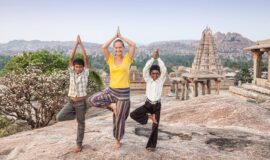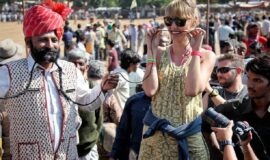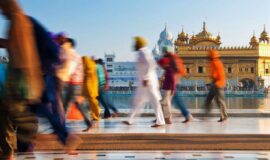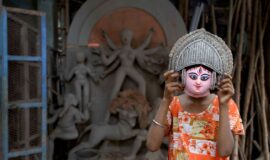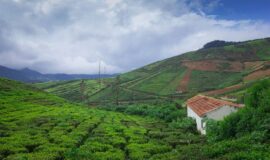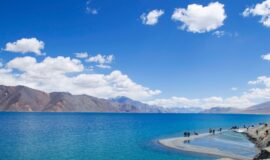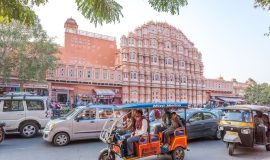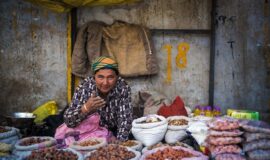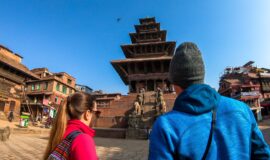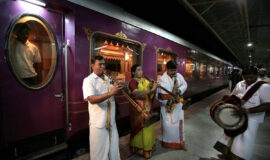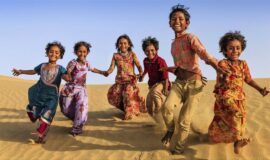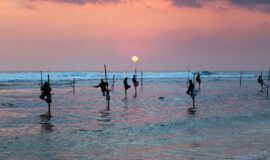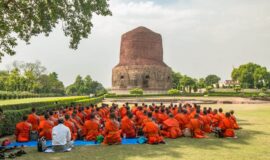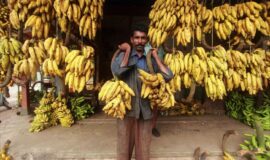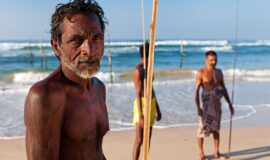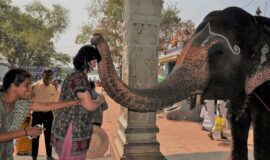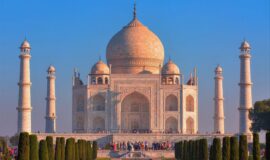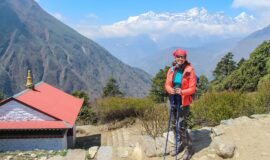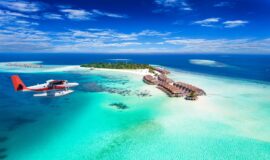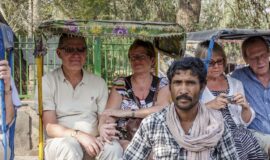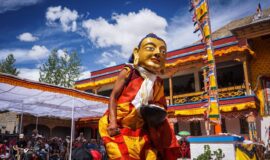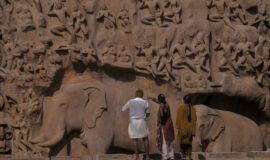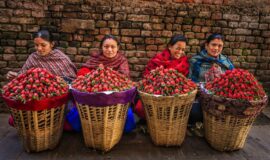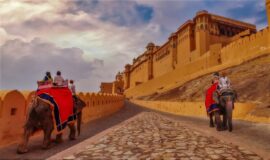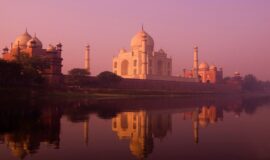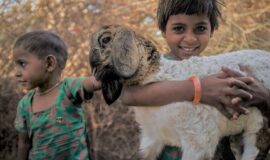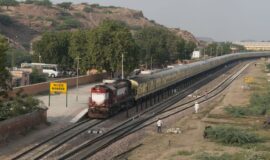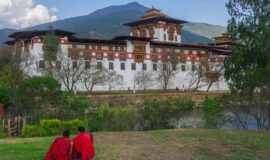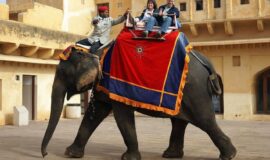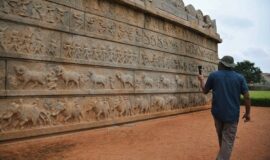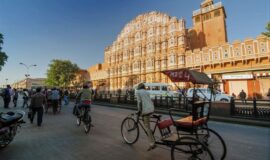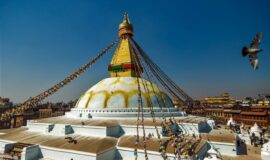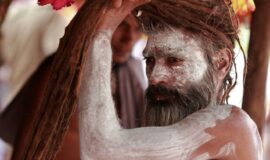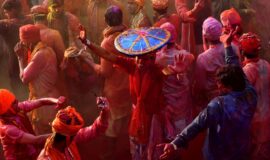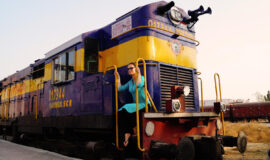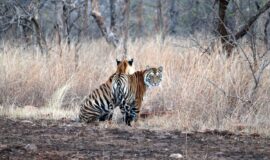What to See and Visit in Punakha- Things to do in Punakha Bhutan
Popular attractions to visit in Punakha
Punakha Dzong
Chimi Lhakhang
Khamsum Yulley Namgyal Temple
Sangchhen Dorji Lhuendrup Nunnery
Rafting in Punakha
Punakha Tshechu
Some Other Images from Punakha, Bhutan
Popular attractions to visit in Punakha
Punakha once served as Bhutan’s capital until 1955. It is one of the most picturesque regions in Bhutan tour packages, with huge slopes of rice paddies, verdant pastures, and the Mo and Pho Chhu rivers. Punakha Dzong, which benefits from a favorable environment, also acts as the Je Khenpo’s winter home (the chief abbot).
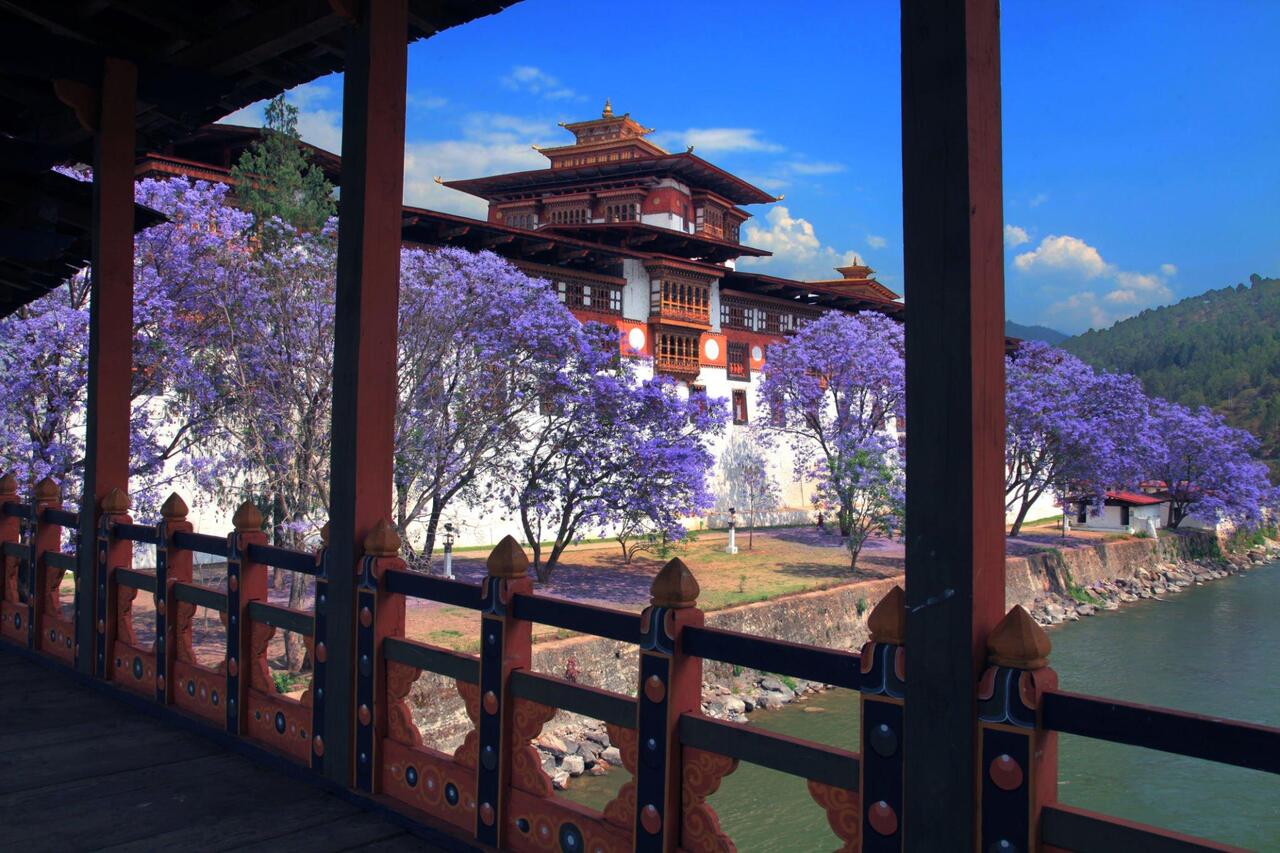
Jacaranda trees in full bloom at the Punakhu Dzong. The monastery, also called ‘The Place of Great Bliss’ is situated between the Pho Chhu and Mo Chhu Rivers, a very important water source for the farmers of the valley
Punakha Dzong
Under Zhabdrung Ngawang Namgyal’s rule, the majestic Punakha Dzong, situated on the banks of the confluence of the Mo Chhu and Pho Chhu rivers, was constructed in 1637. The dzong is extremely significant historically since it served as the site of numerous important Bhutanese occasions, such as the first king’s inauguration and the fifth king’s royal wedding.
Rangjung Kasarpani, Zhabdrung Ngawang Namgyal’s bones, and the Terton Pema Lingpa are all housed in the dzong. The magnificent dzong is at its finest in the springtime when the jacaranda trees in the courtyard bloom spectacularly.
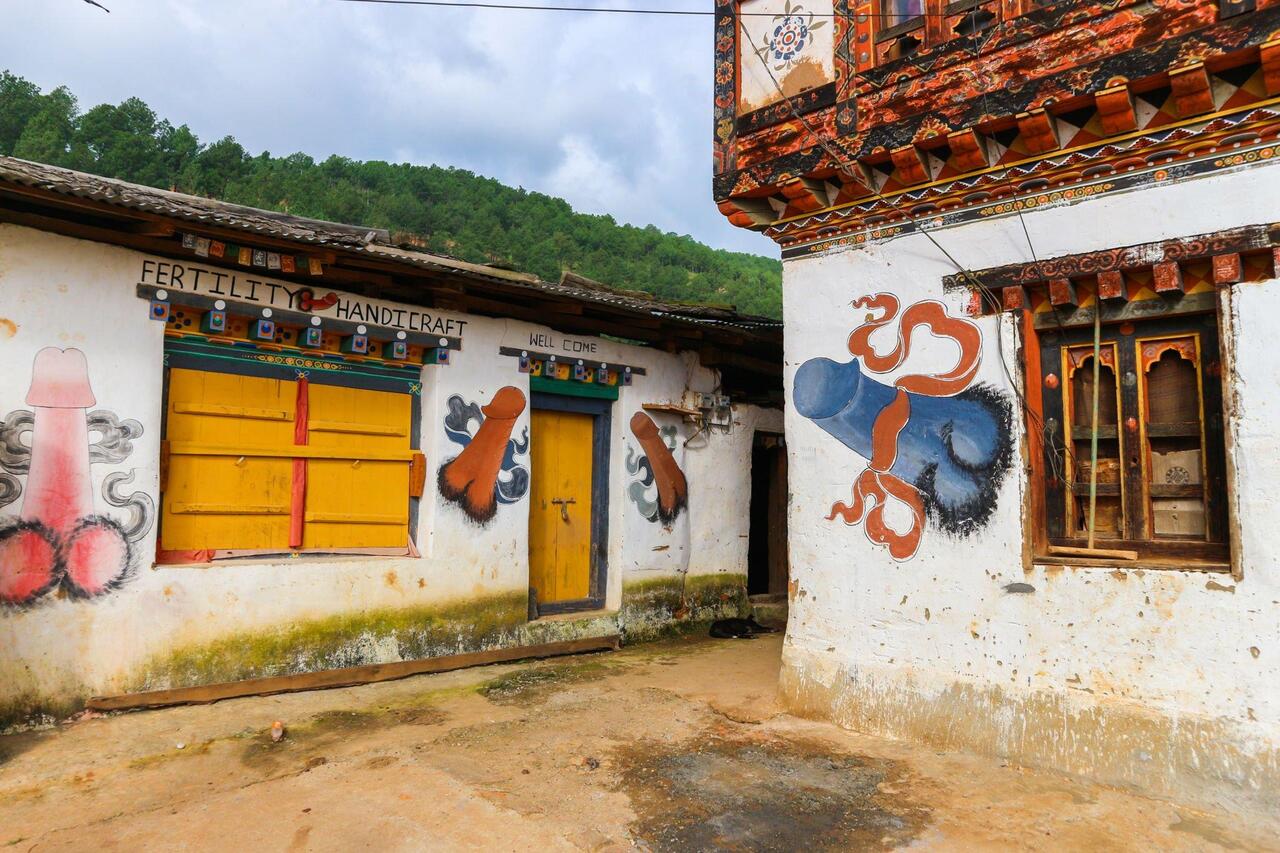
1 Phalluses painted on the walls of the path leading to the Chimi Lhakhang. They are commonplace in the kingdom of Bhutan and are references to the so-called Divine Madman, Lama Drukpa Kunley, a popular Tibetan poet, missionary and monk who renounced the ascetic life of a monk for a more lighthearted lifestyle
Chimi Lhakhang
In the community of Sopsokha, on a conical mound, stands the revered Chimi Lhakhang, also known as the Fertility Sanctuary. Lama Drukpa Kuenly, a Tibetan saint who lived in the fifteenth century, is honored in this shrine. His unique approaches to teaching Buddhism earned him the moniker “Holy Madman.”
You will begin your Bhutan luxury tours at the Sopsokha Community shophouses before approaching Chimi Lhakhang. Many paintings and crafts using the strange phallus symbols can be seen throughout the area. All different colors, forms, and sizes may be found in the wood crafting and phallus photos.
To get to the entrance of Chimi Lhakang from the community, it will take you around 20 minutes of walking through a lovely paddy and mustard region.
The intriguing story surrounding the temple claims that Lam Drukpa Kunley slew a Dochu La demon and imprisoned it in a rock not far from the current place of the chorten with his “magic thunderbolt of enlightenment.” And so is the tale of how the phallic sign in Bhutan came to represent divinity and protection.
To receive favors from Drukpa Kuenley, numerous childless or newlywed couples travel around the planet to the sanctuary. Intriguing contemporary miracle stories from parents who became pregnant due to visiting Chimi Lhakhang are also widely available.
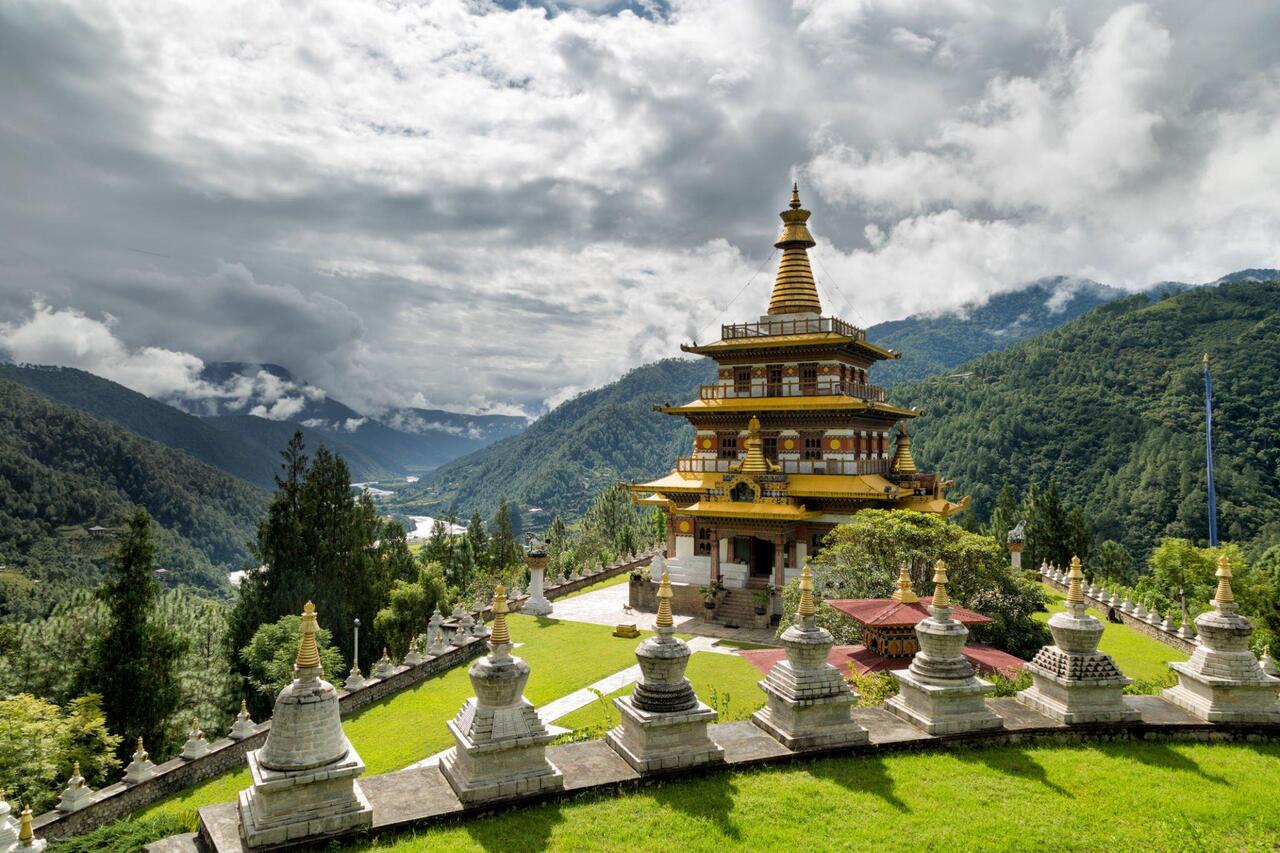
In 2004 the queen of Bhutan built the Khamsum Yulley Namgyal Stupa in the Punakha Valley with a specific goal in mind; to bring peace to all living things. It took Bhutanese sculptors, painters and carpenters nine years to complete the four story chorten
Khamsum Yulley Namgyal Temple
To protect Bhutan from negative energies and to promote peace and tranquility among all living things, Her Highness the Queen Mother of Bhutan, Ashi Tshering Yangdon, constructed the Khamsum Yulley Namgyal Chorten in Punakha in 2004. Vajrakilaya, a powerful and vindictive deity, is represented by a sculpture on the first floor of the monastery. Sakyamuni Buddha is depicted in his traditional stance by a golden statue on the third floor of the monastery.
The hike up to the temple over an awe-inspiring suspension bridge takes about two hours. Along the walk you can feast your eyes on the spectacular panoramic views of the Punakha Valley carpeted with paddy fields, and once on top, watch the river sparkling in the sunlight down below. The Khamsum Yulley Namgyal Chorten is hailed as a high point in the history of Bhutanese architecture and tradition.
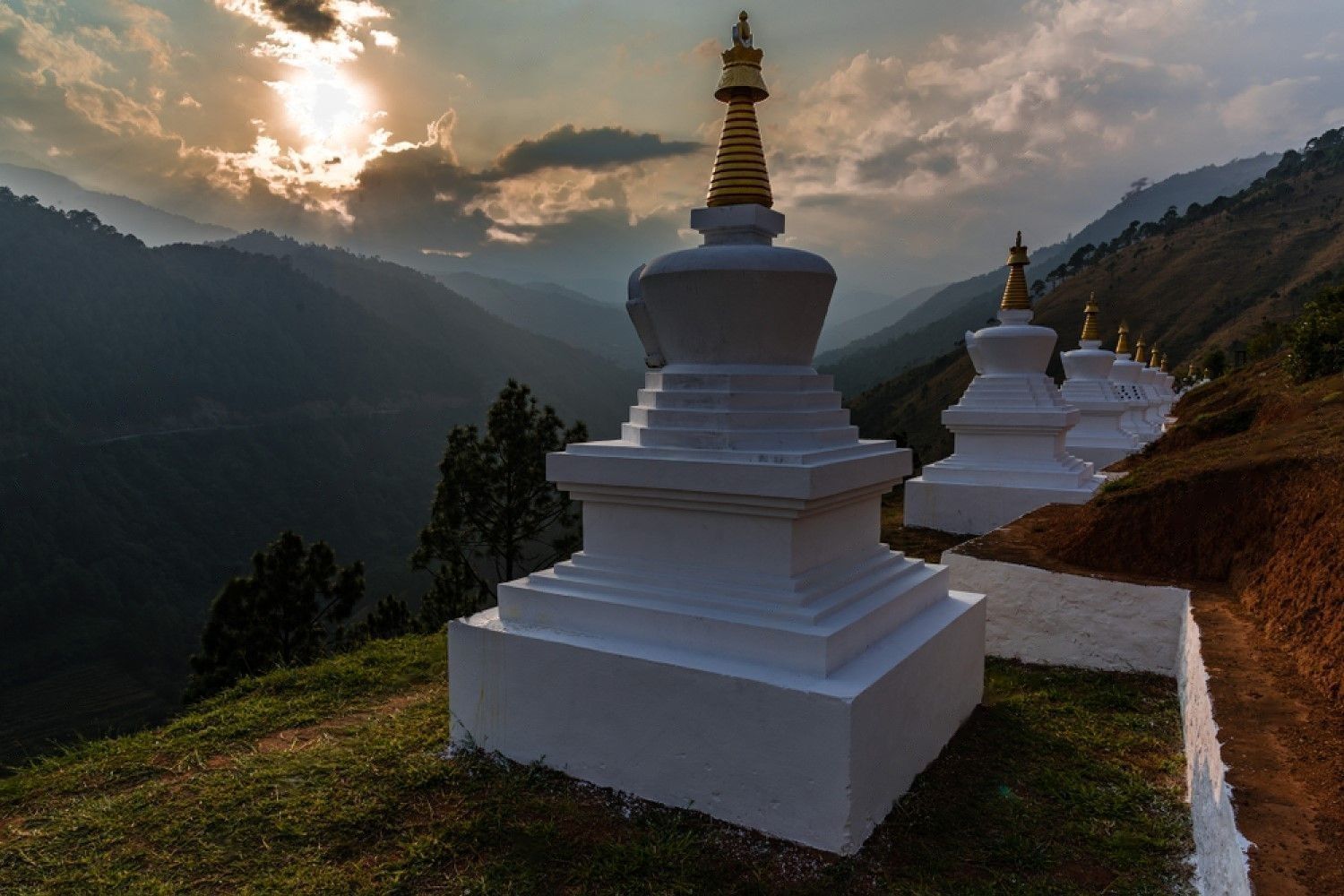
In 2008 the construction of the nunnery Sangchhen Dorji Lhuendrup started, which was inaugurated in 2010. The nunnery is perched high on a hill and offers panoramic views of the Toebesa, Punakha and Wangdue valleys.
Sangchhen Dorji Lhuendrup Nunnery
In 2008, construction began on the Sangchhen Dorji Lhuendrup nunnery, which was dedicated in 2010. The nunnery is positioned high on a hilltop with a panoramic view of the Toebesa, Punakha, and Wangdue valleys. The location is gorgeous, peaceful, tidy, and has a nice garden with vibrant meditation banners.
Along with viewing breathtaking holy places, Punakha offers a variety of enjoyable activities, including whitewater rafting and the well-known Punakha Tshechu.
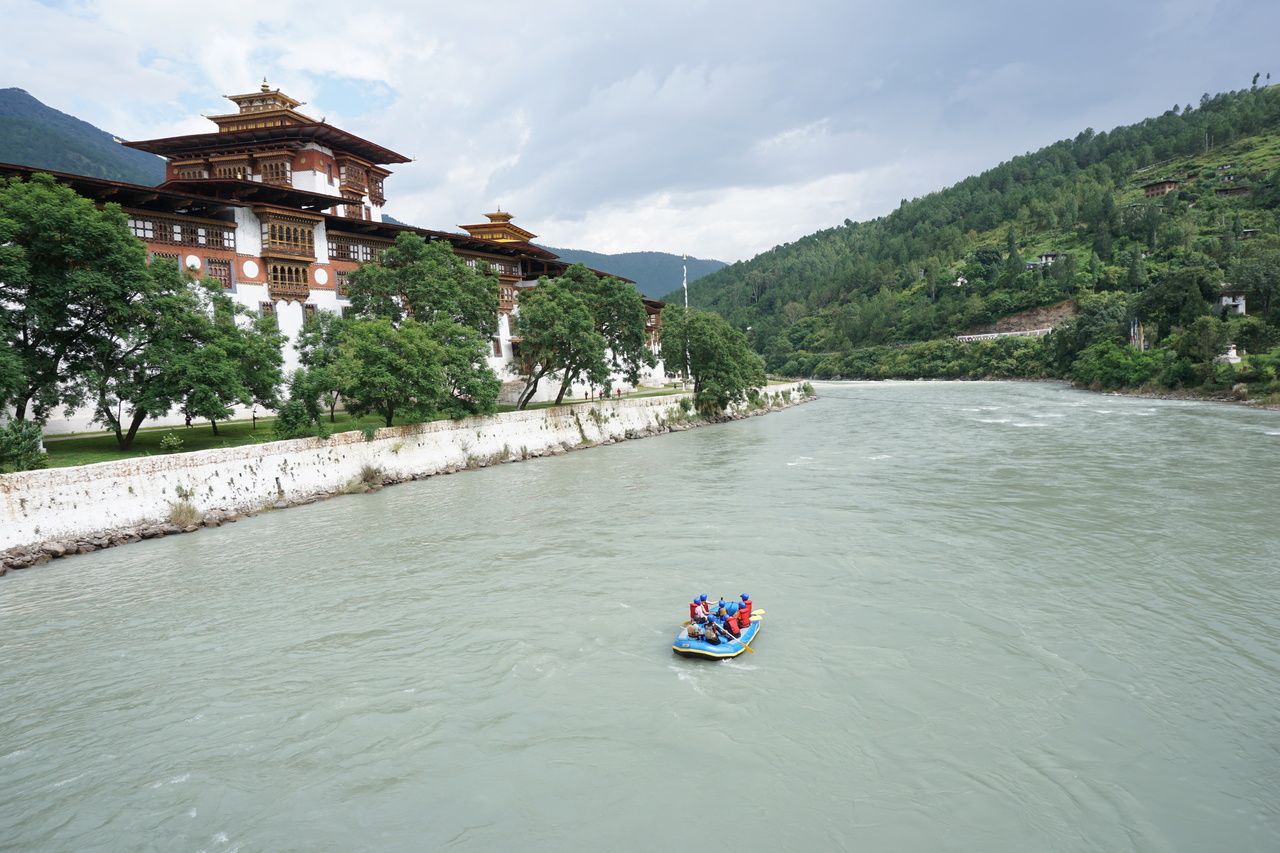
River rafting in inflatable boats is a popular activity with tourists. The views of the Punakha Dzong from the river is simply splendid
Rafting in Punakha
The most well-liked secure, enjoyable, and thrilling soft experience in Bhutan tour packages is rafting in the Punakha canyon. With a beautiful and picturesque view of the Punakha valley, it is a joyful experience. You can see exotic birds by the riverbank as you raft along the rivers.
Pho Chhu (male river) and Mo Chhu are the two rivers in Punakha where rafting is permitted (female river). The Mo Chhu river flows for a distance of 10 kilometers after the Pho Chhu, which is around 15 km long. Seasonal differences affect rafting excursions. Due to rain, summer rivers have high tides, swift wave action, and murky water. In contrast, rivers in the winter have shallow water that is crystal clear and has a leisurely, tranquil flow.
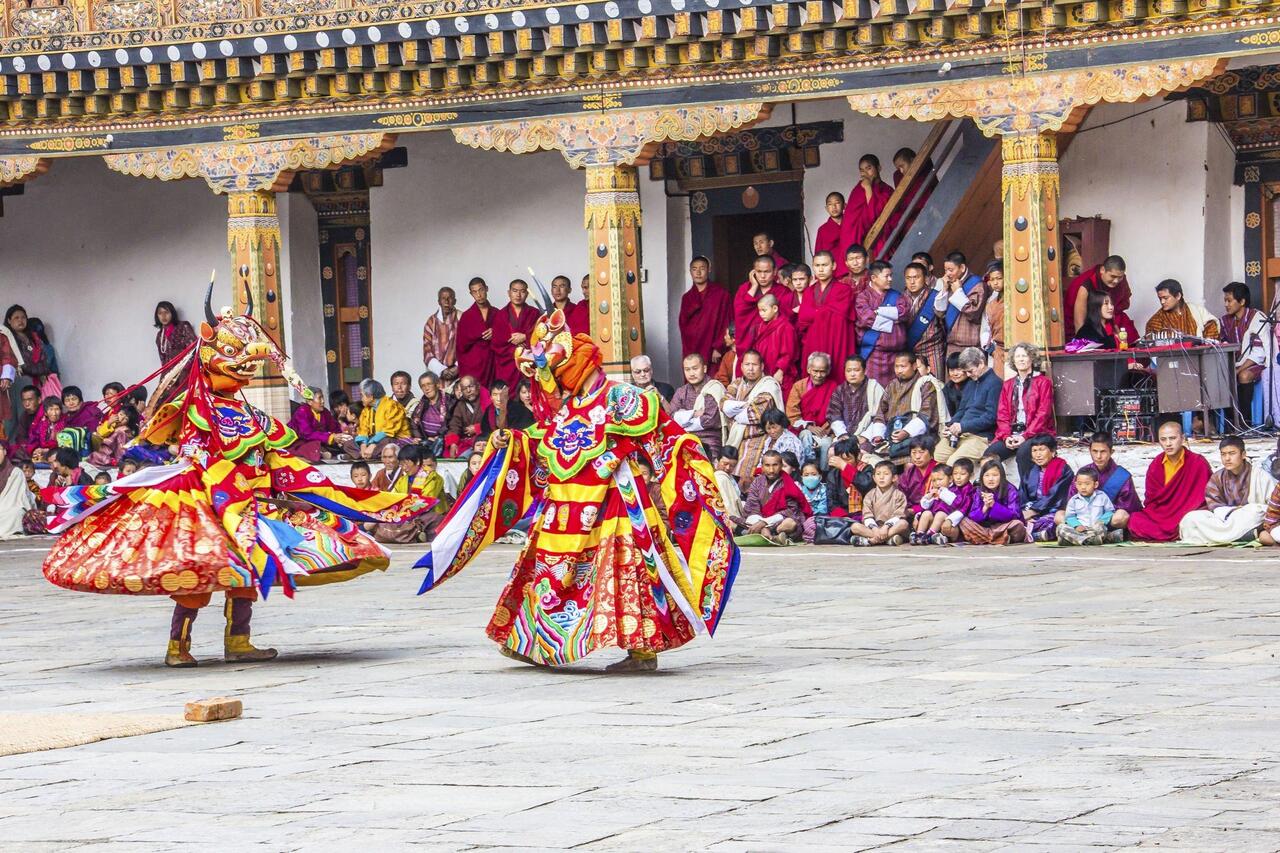
Spectators admire the antics of masked dancers at the annual Drupchen Festival held in March at the Punakhu Monastery. The festival was first held to celebrate the unification of the nation after invading forces were driven out in the 17th century
Punakha Tshechu
One of Bhutan’s most well-known religious celebrations is called Punakha Tshechu, which takes place in February or March inside the magnificent Punakha Dzong. It takes place just after the well-known Punakha Drubchen. The festival’s primary event is the unfolding of Guru Rinpoche’s thongdrol, or huge thangka display. The thongdrol is said to free and cleanse sins with just the sight of it. The tshechu is one of the best opportunities to interact with locals and discover Bhutan’s unique living heritage. Holidays in Bhutan are a wonderful experience for couples.
Some Other Images from Punakha, Bhutan
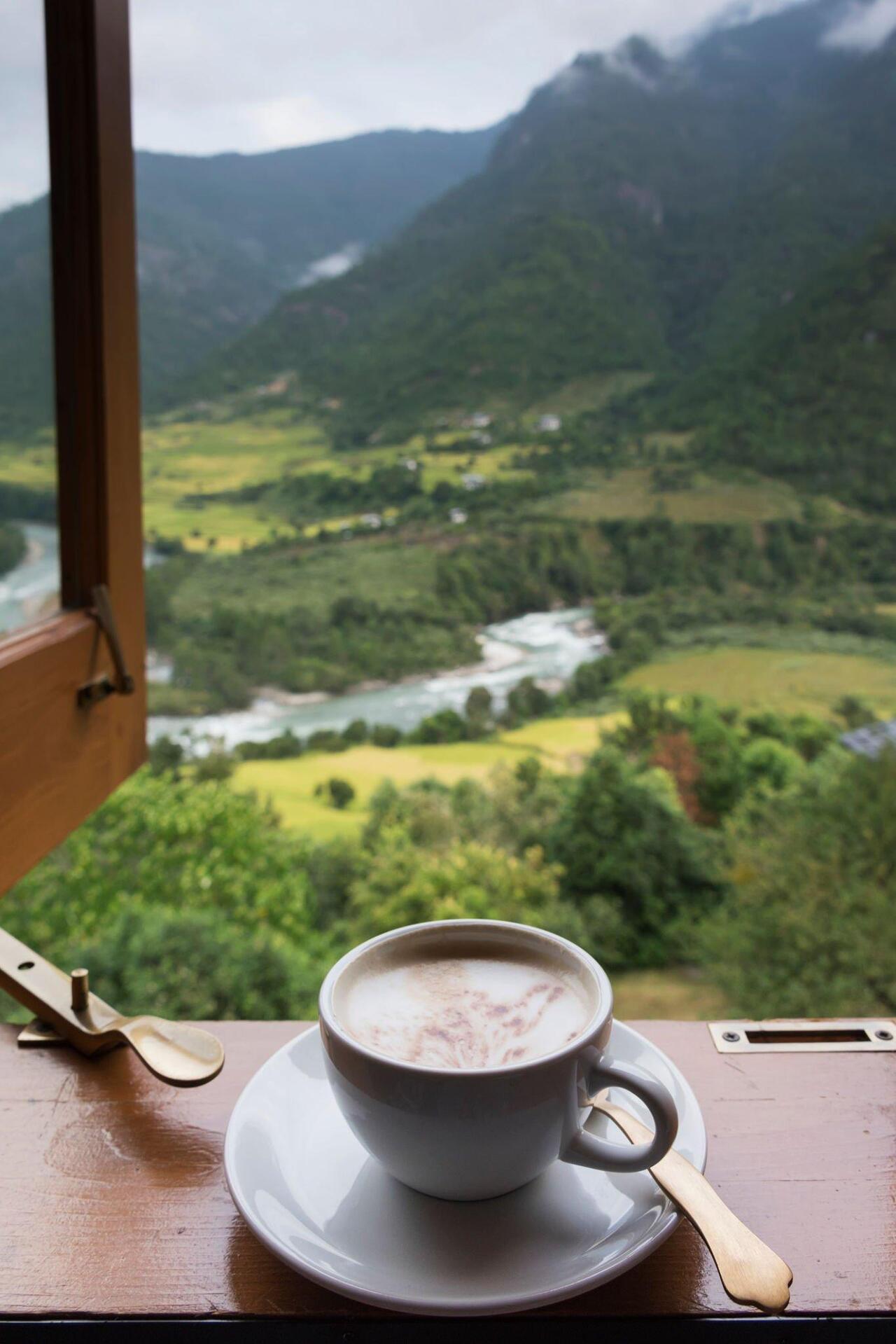
The Druk Wangyal Khangzang Stupa has 108 chortens and is located on the scenic Dochula Pass between Punakha and Thimphu
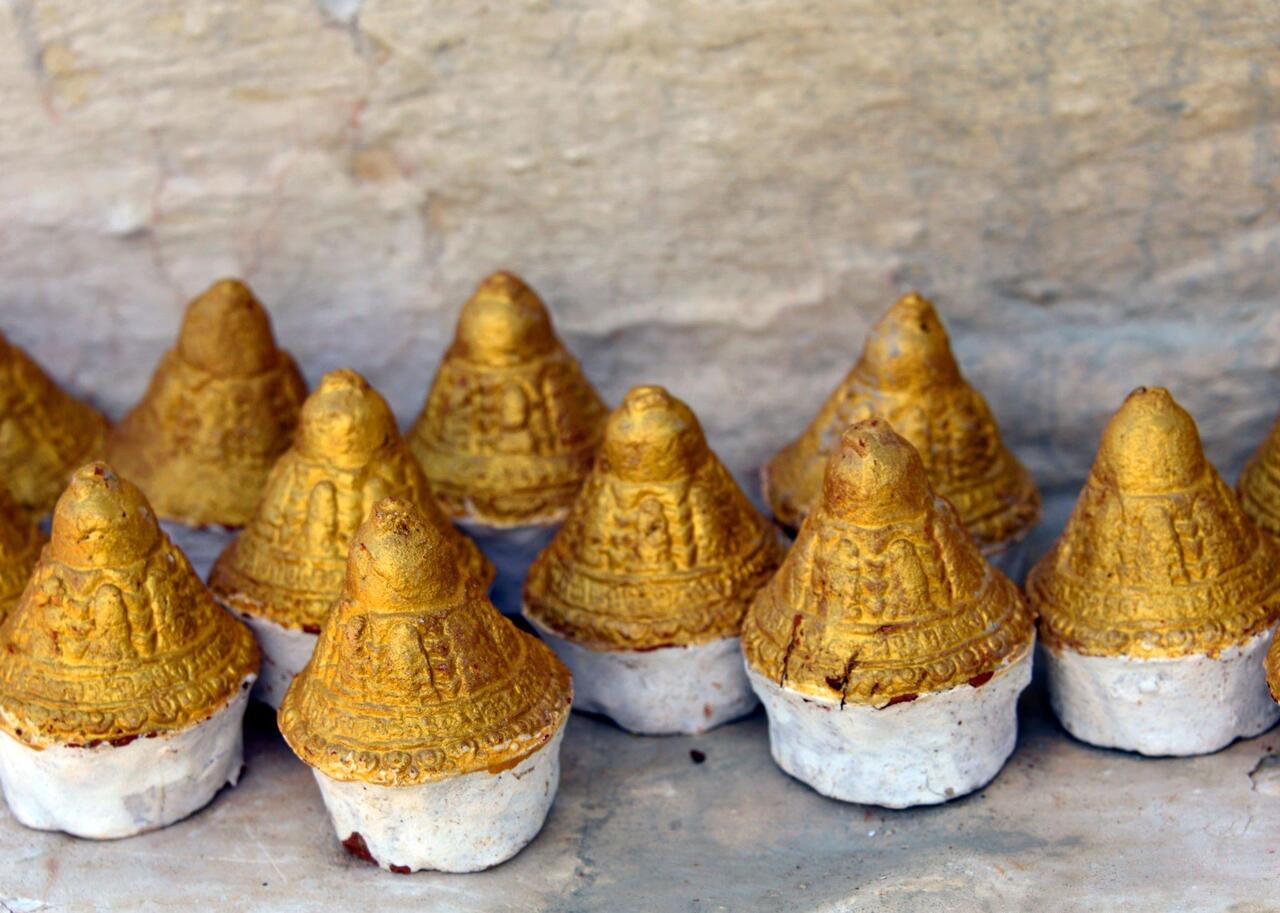
Tsa tsas are molded from clay and the ashes of departed family members. They are made by monks during special religious ceremonies and serve to pay homage to the departed. The cones in the picture, sometimes referred to as cupcakes were left close to a stupa near the Puna Tsang Chhu River, Bhutan
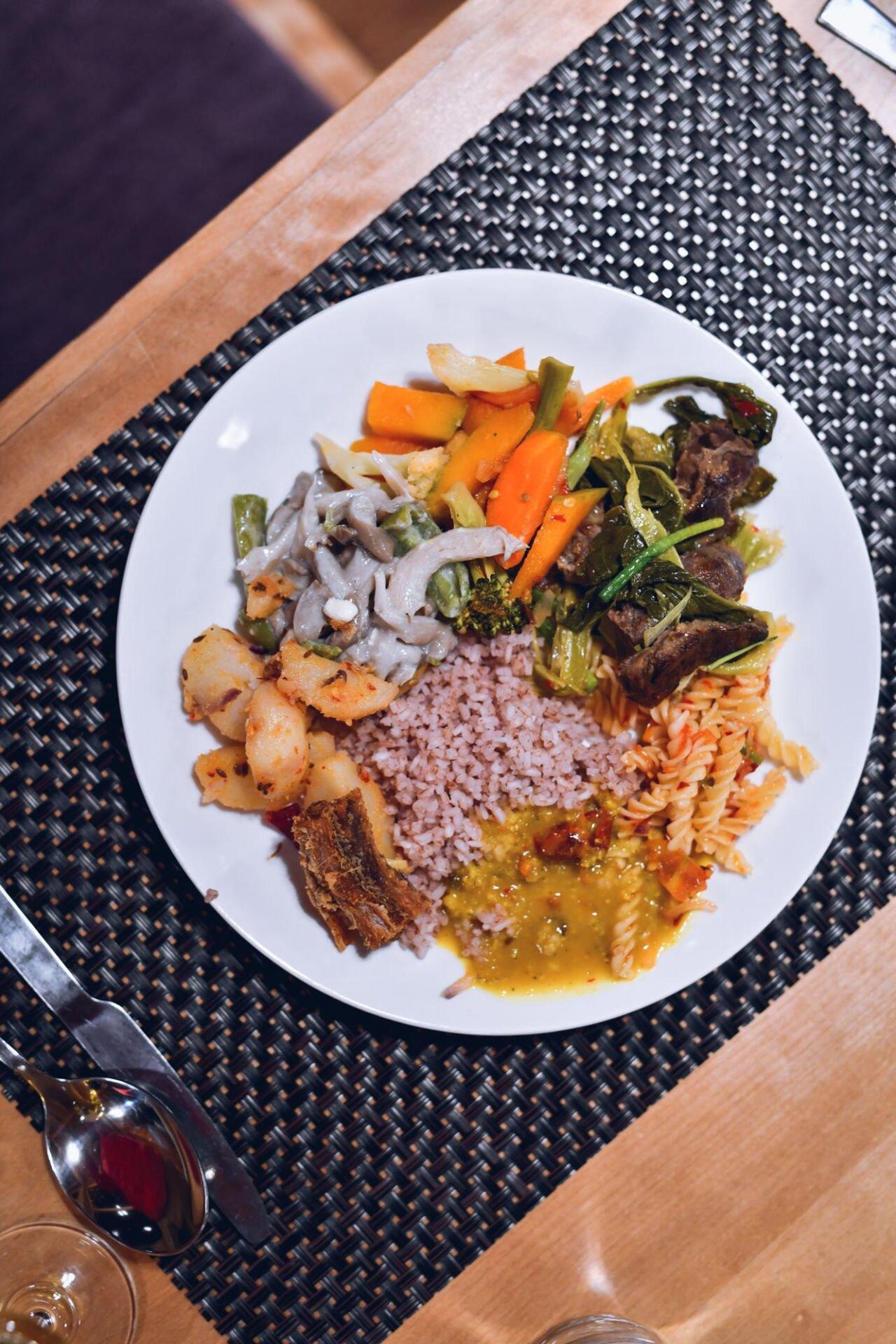
A typical Bhutanese dish with vegetables, meat and red rice. The red rice grown in Bhutan and is of a high quality, and is exported all over the world. It is a rare variety of rice only cultivated in a few countries on earth
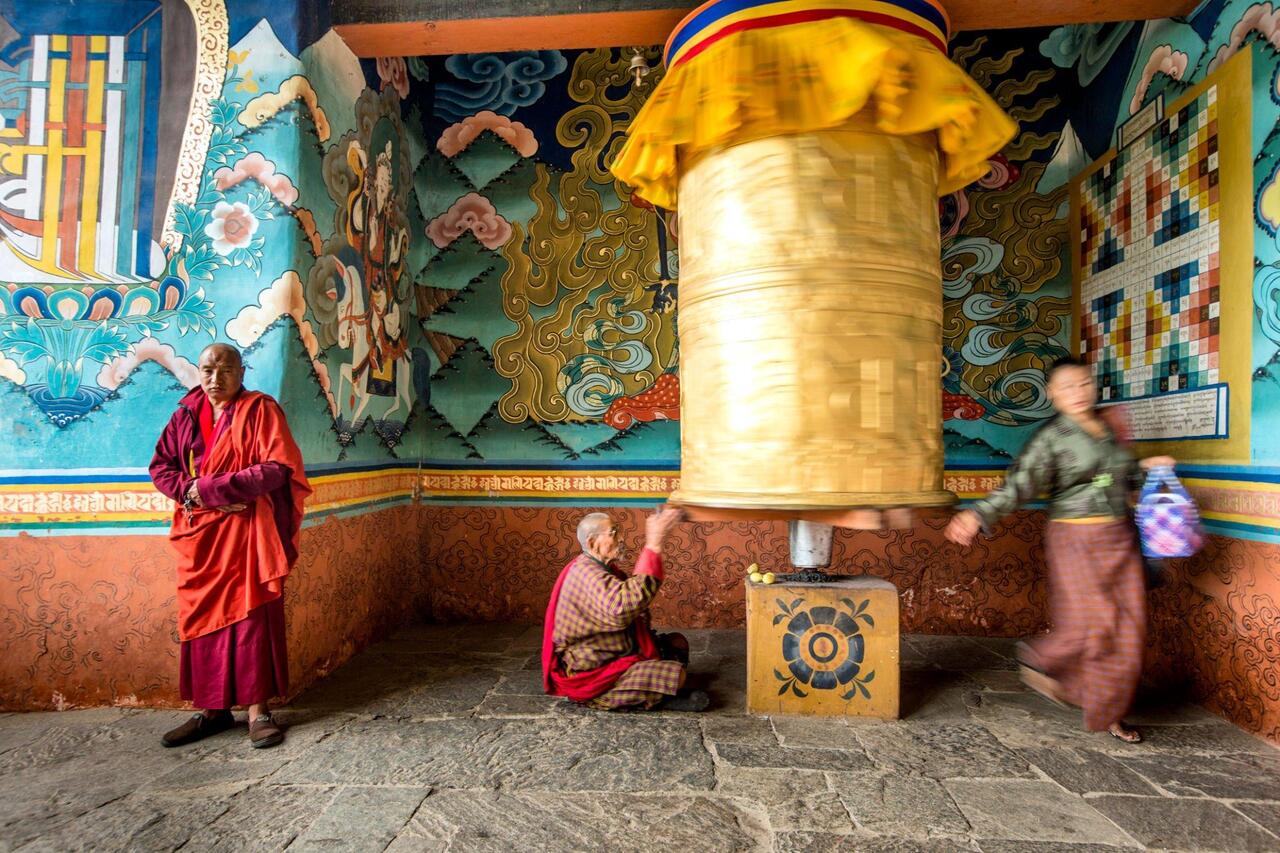
Devotees turn a prayer wheel in the Punakha Monastery while a monk looks on. The walls are covered in colorful murals. Prayer wheels bring wisdom and merit, or good karma and are always spun in a clockwise direction
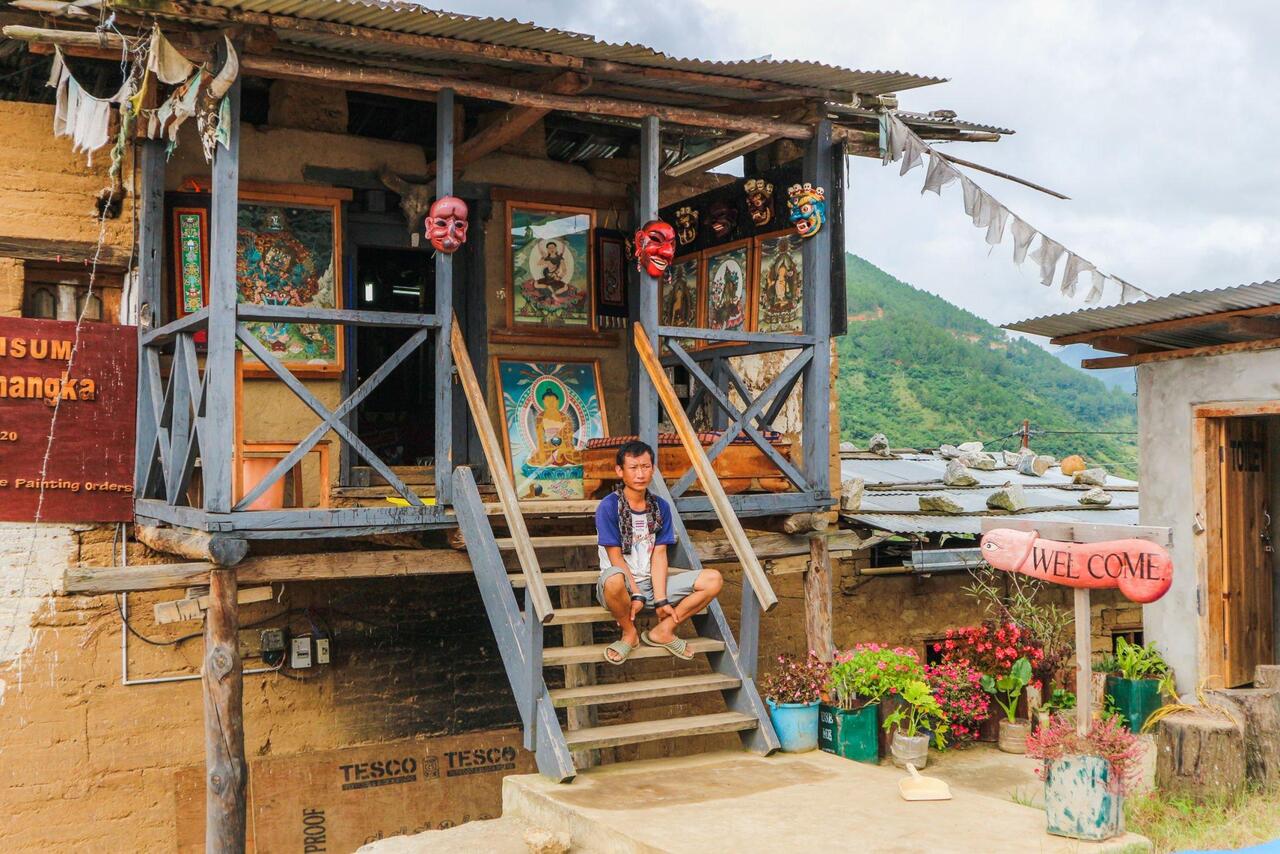
A man sits in front of his souvenir shop in the little village of Lobesa in the low lying Punakhu Valley, Bhutan. Lobesa is one of numerous pristine villages in the valley
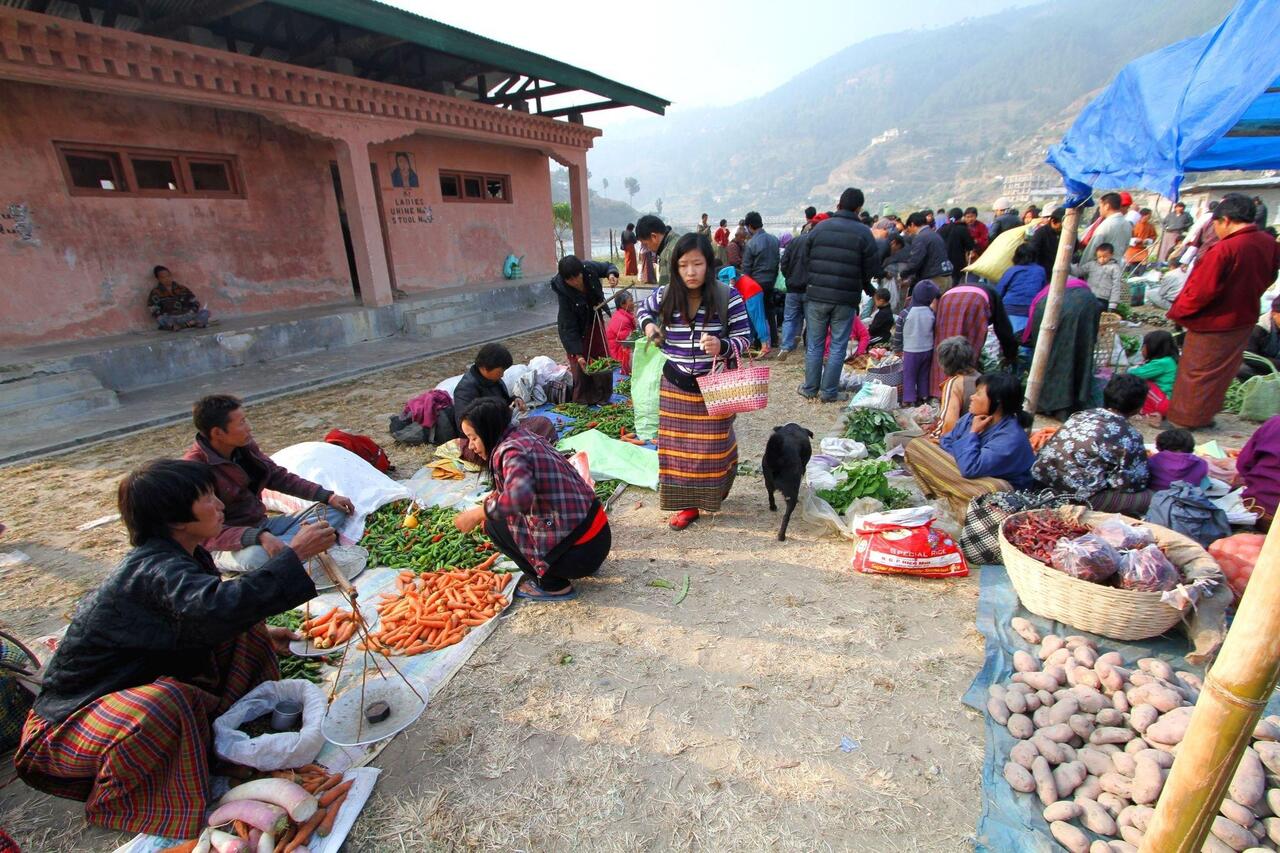
A man sits in front of his souvenir shop in the little village of Lobesa in the low lying Punakhu Valley, Bhutan. Lobesa is one of numerous pristine villages in the valley
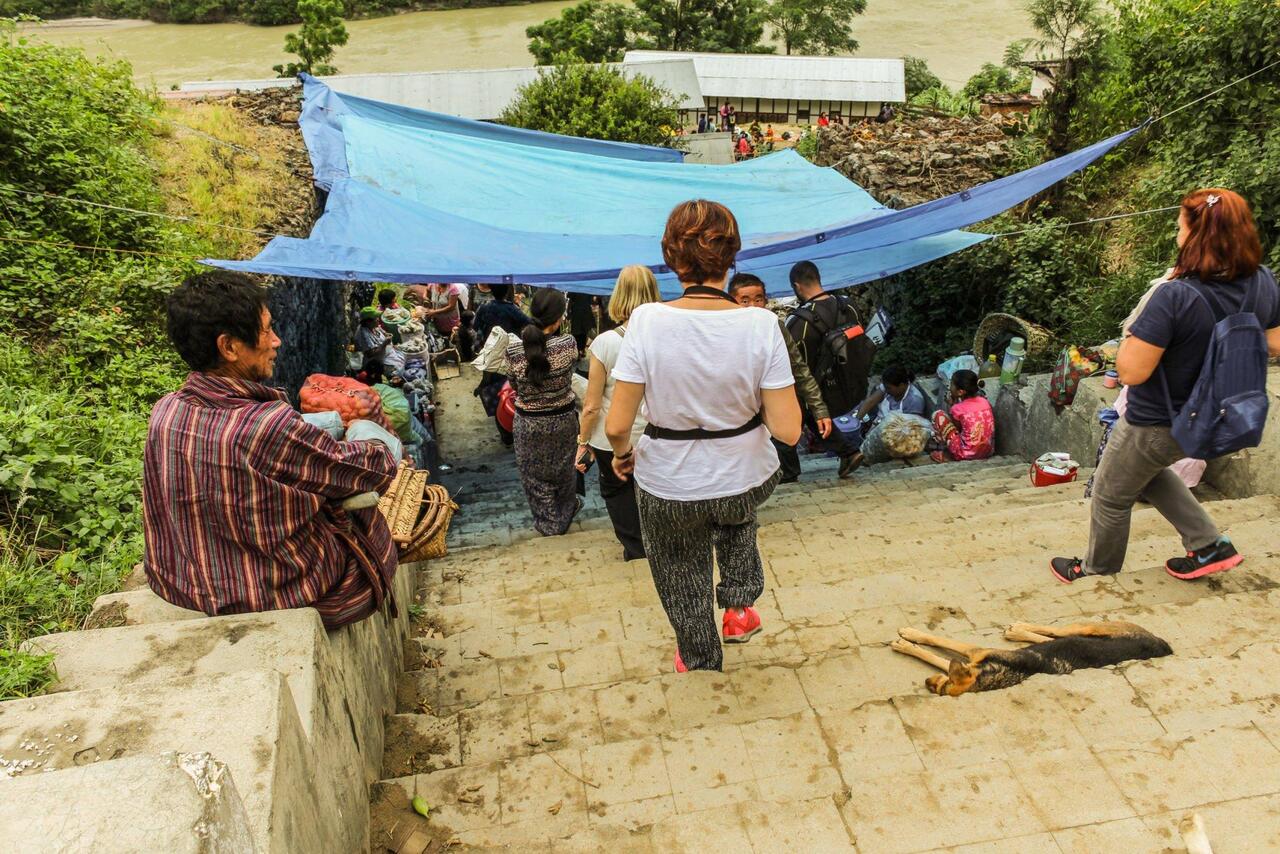
Foreign tourists and Bhutanese people descend the steps to do their shopping in the local farmer’s market in Khuruthang near Punakha
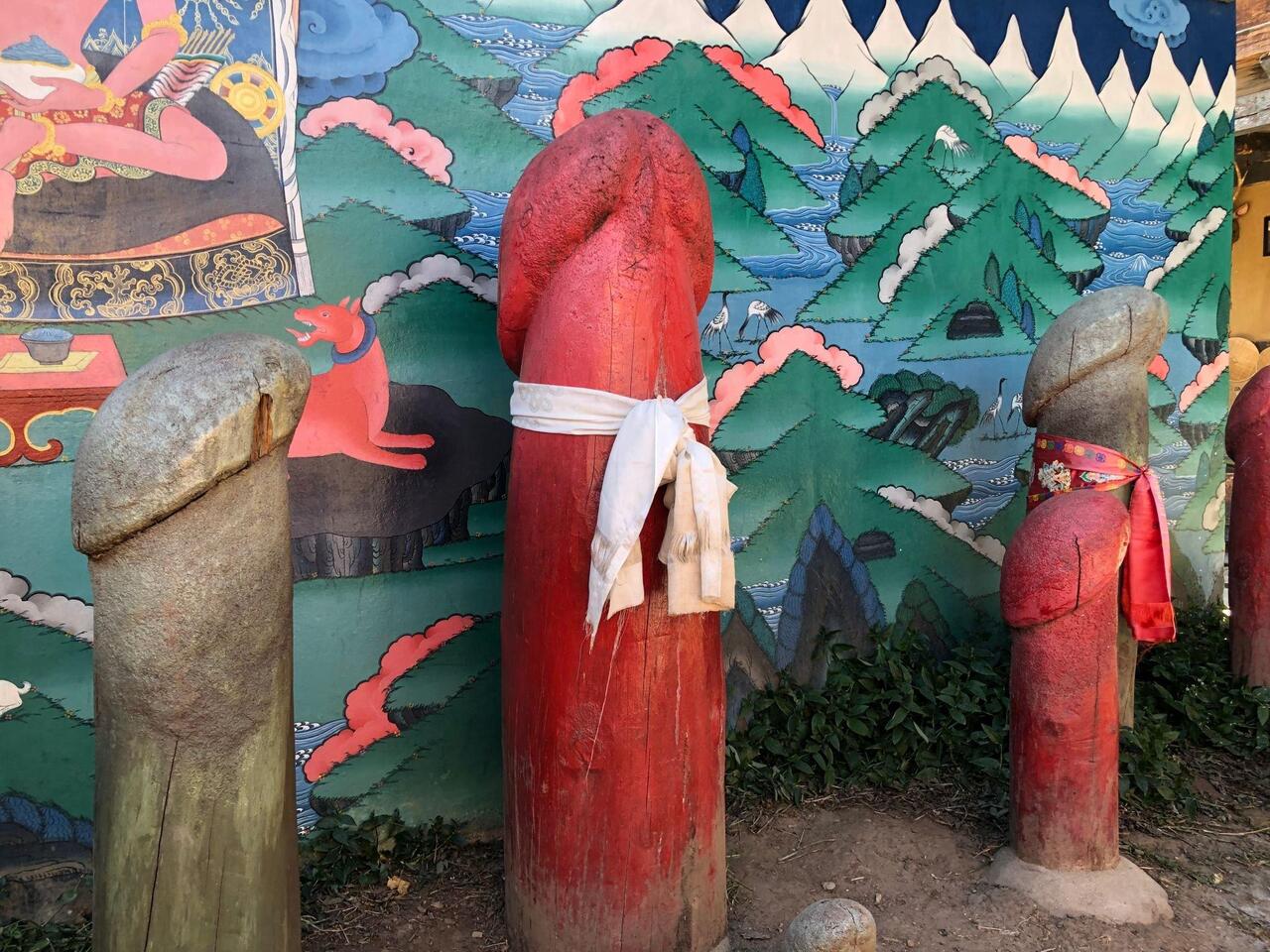
Phalluses painted on the walls of the path leading to the Chimi Lhakhang. They are commonplace in the kingdom of Bhutan and are references to the so-called Divine Madman, Lama Drukpa Kunley, a popular Tibetan poet, missionary and monk who renounced the ascetic life of a monk for a more lighthearted lifestyle
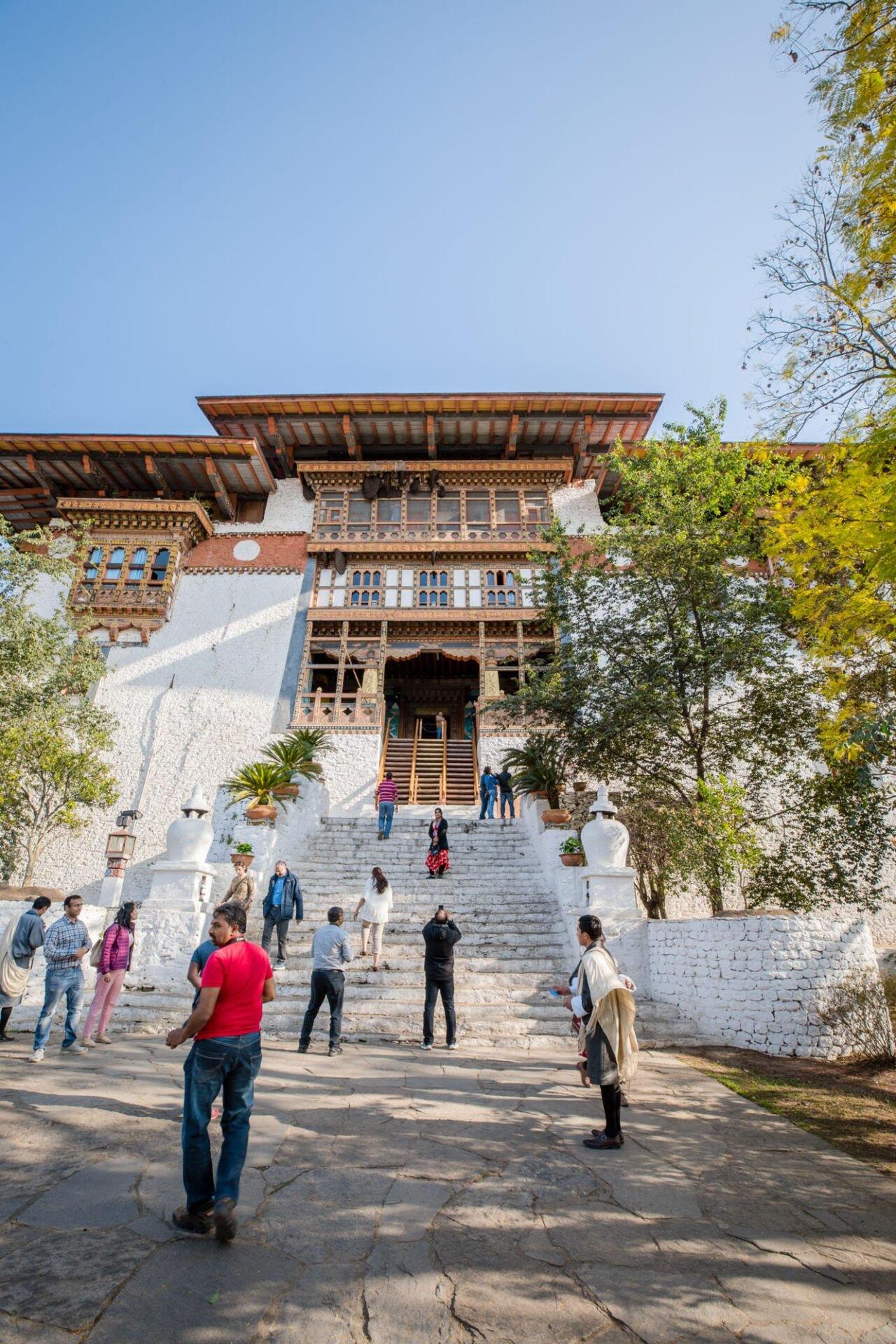
Tourists approaching the Punakha Monastery, Bhutan. Constructed in the mid 1600’s as a so-called embodiment of Buddha values, it has defense fortifications such as a steep wooden draw staircase with a heavy wooden door
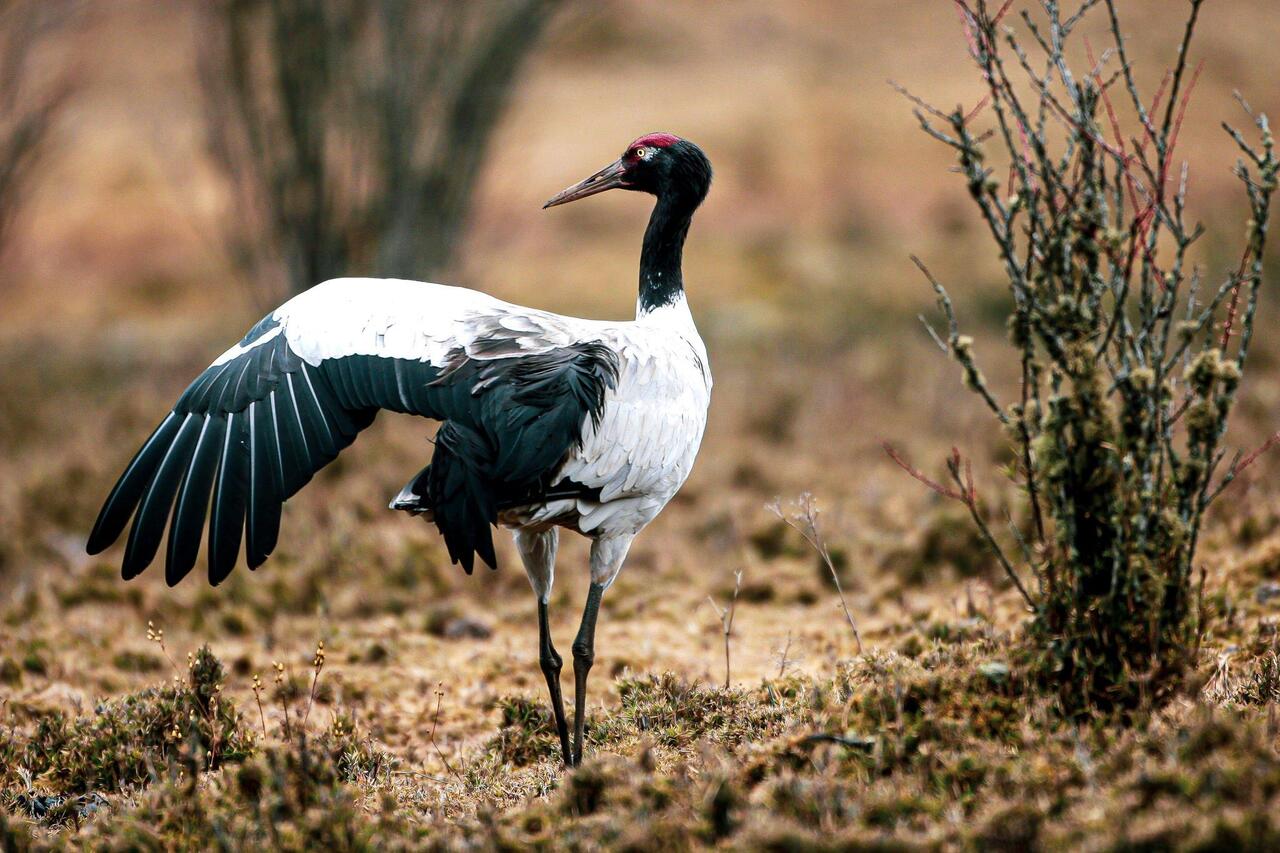
Lush forested areas in the Punakha Valley draw many bird species, including the black necked crane, the only alpine crane species in the world. It is considered sacred all over Bhutan and is celebrated at the yearly Black Necked Crane Festival
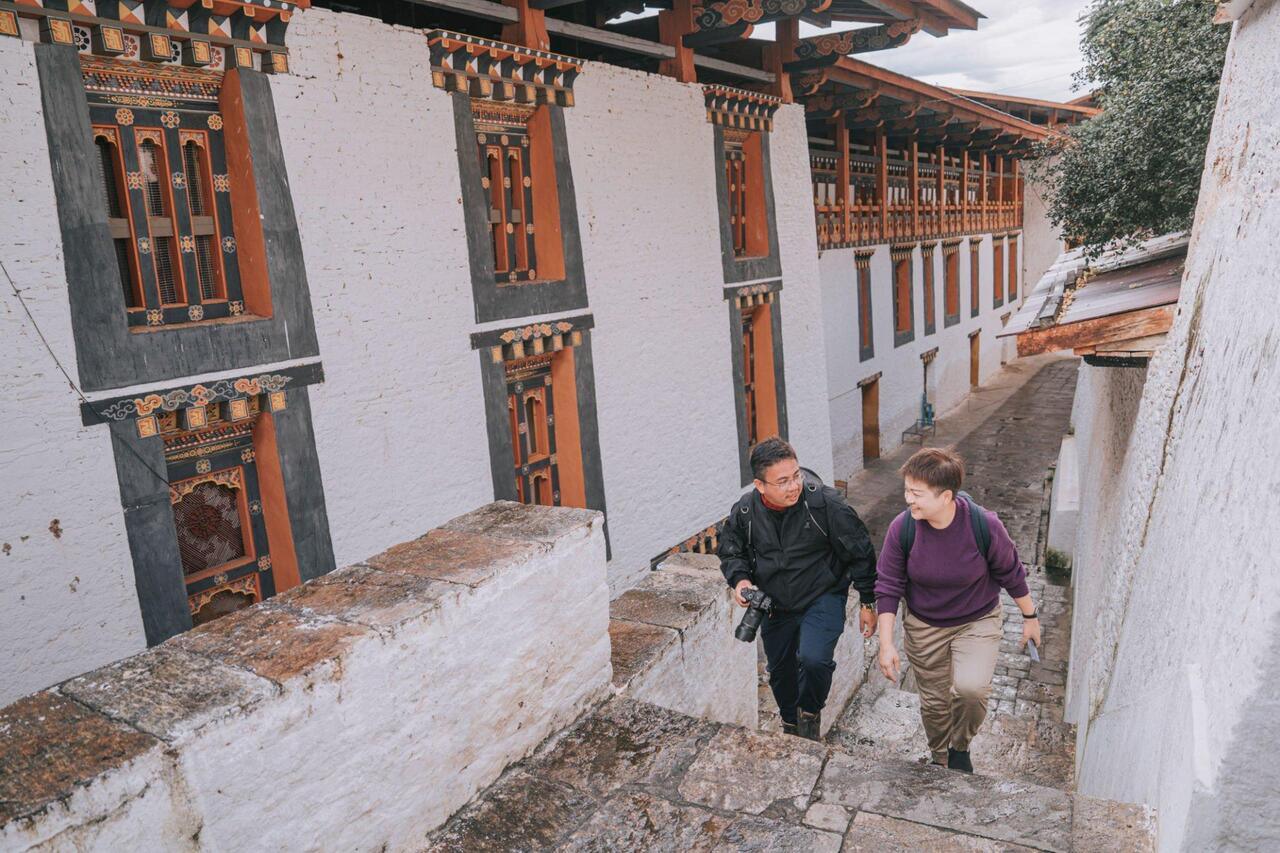
Two foreign visitors climb the stairs at the Punakhu Dzong in Bhutan. An unusual feature of the dzong is that it has three courtyards instead of the usual two
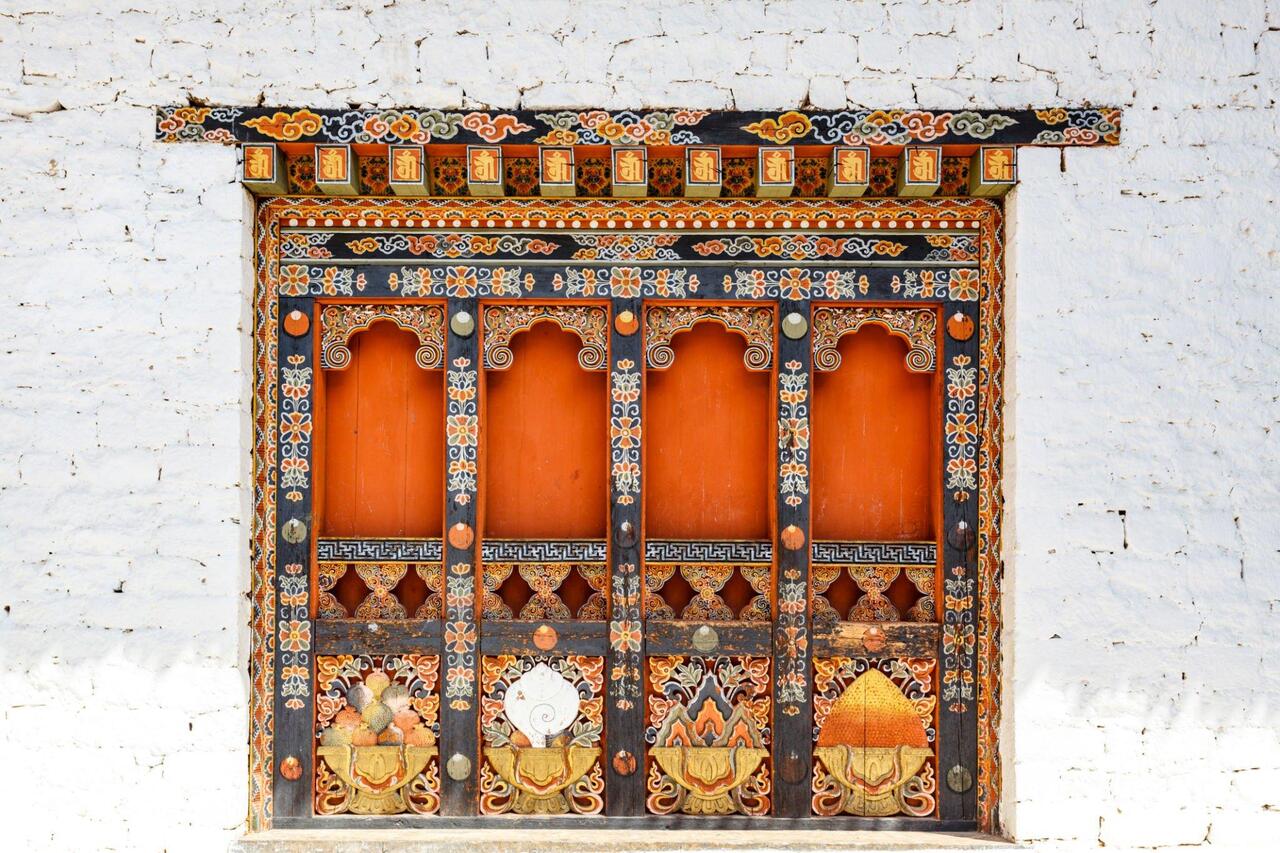
A close-up shot of a window in the façade of the Punakhu Dzong shows the typical woodwork frame with intricate decorations
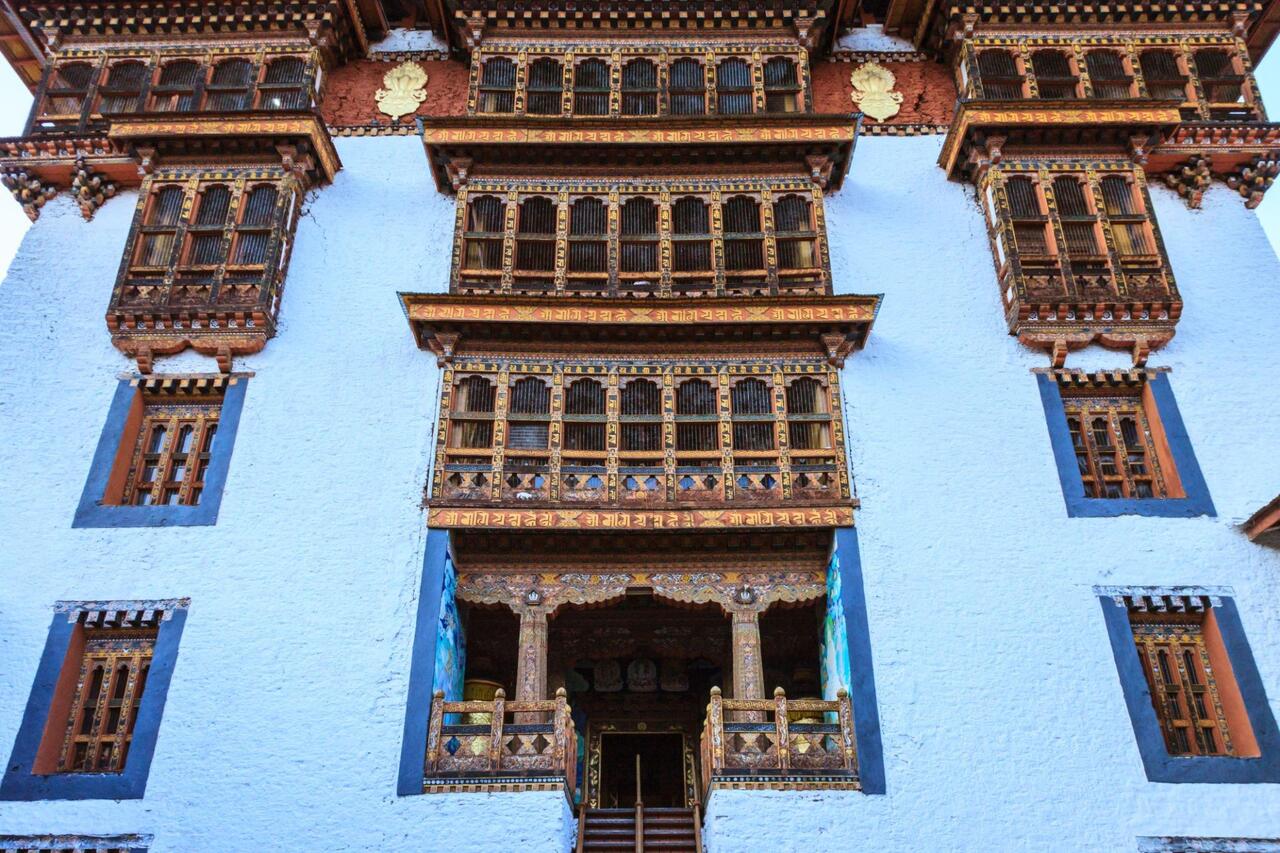
This façade of the Punakhu Dzong is an excellent example of how prominently woodwork features in the architecture of these fortified monasteries
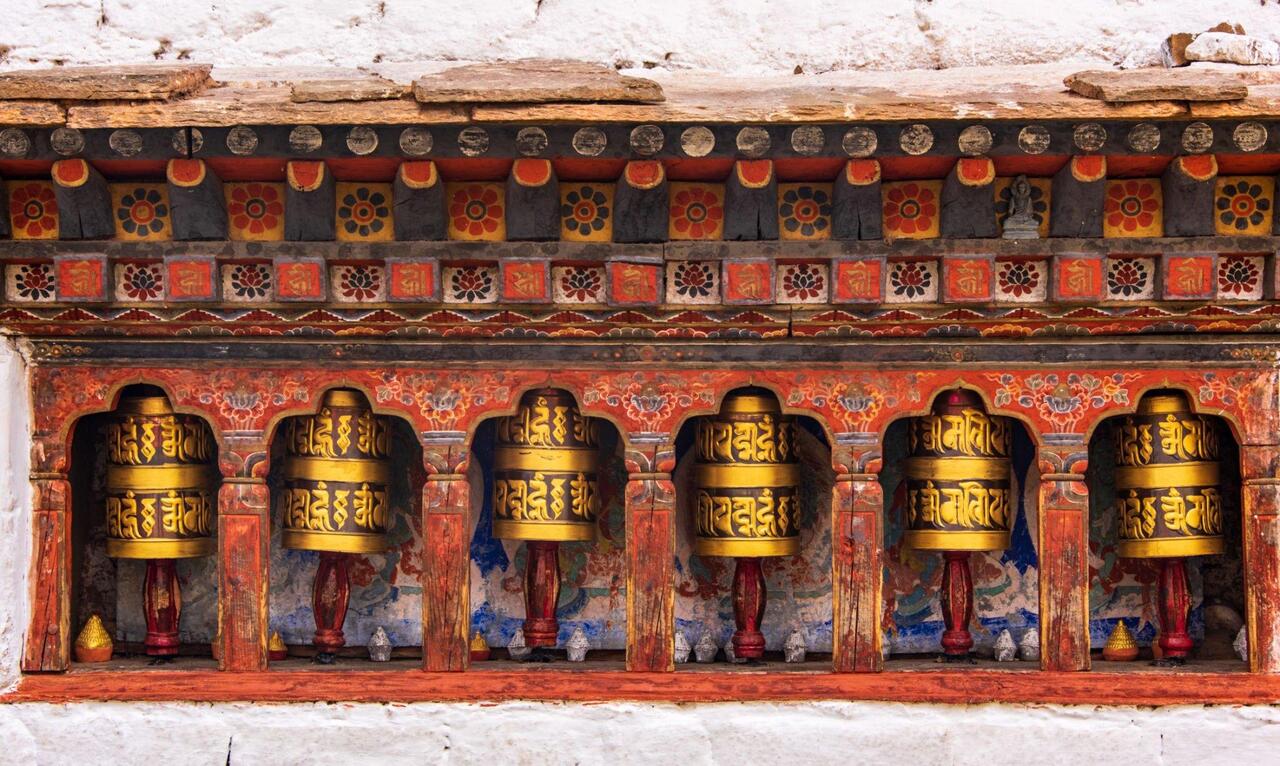
A row of golden prayer wheels in beautiful decorative niches in Punakhu Dzong, Bhutan. The use of these wheels are equivalent to reciting a mantra in Buddhism
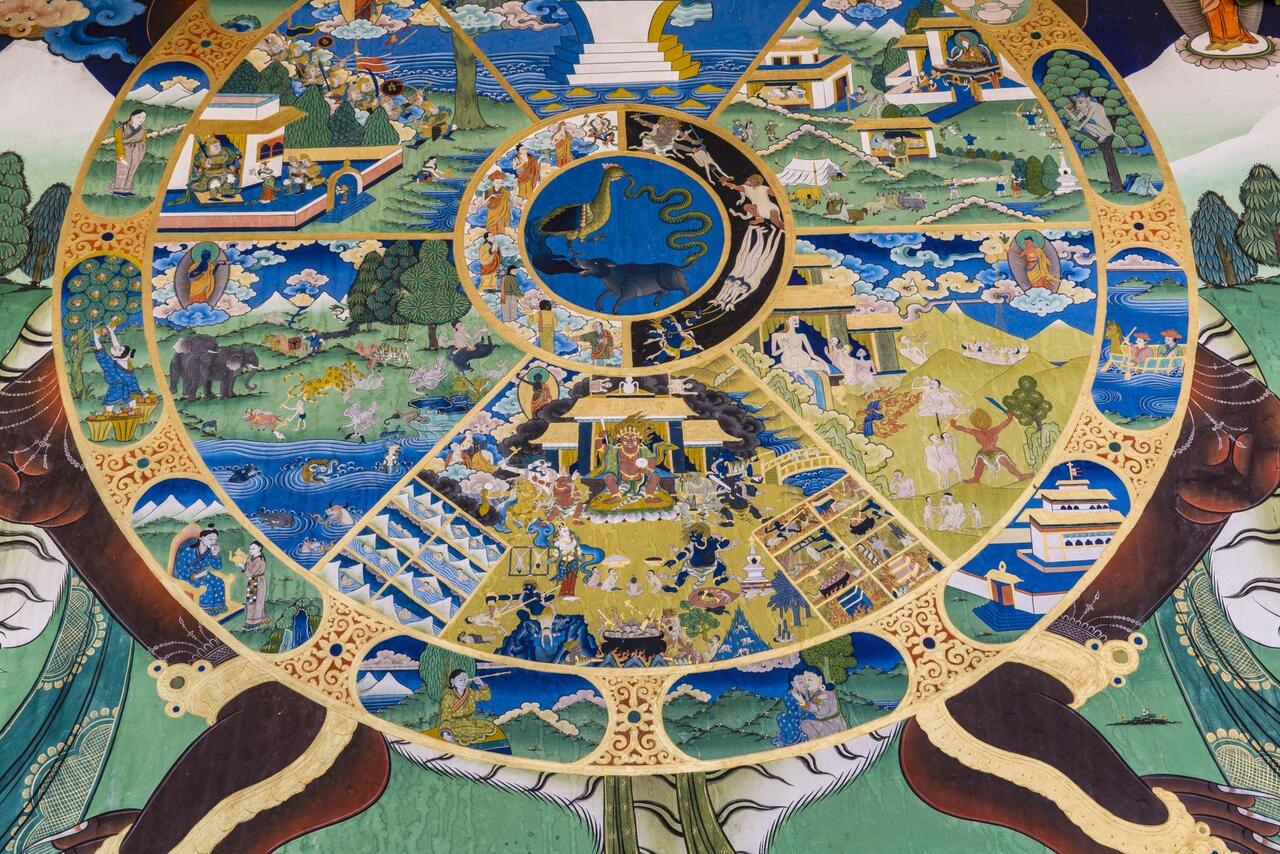
One of the many colorful murals that adorn the ceilings and walls in the Punakhu Dzong, Bhutan
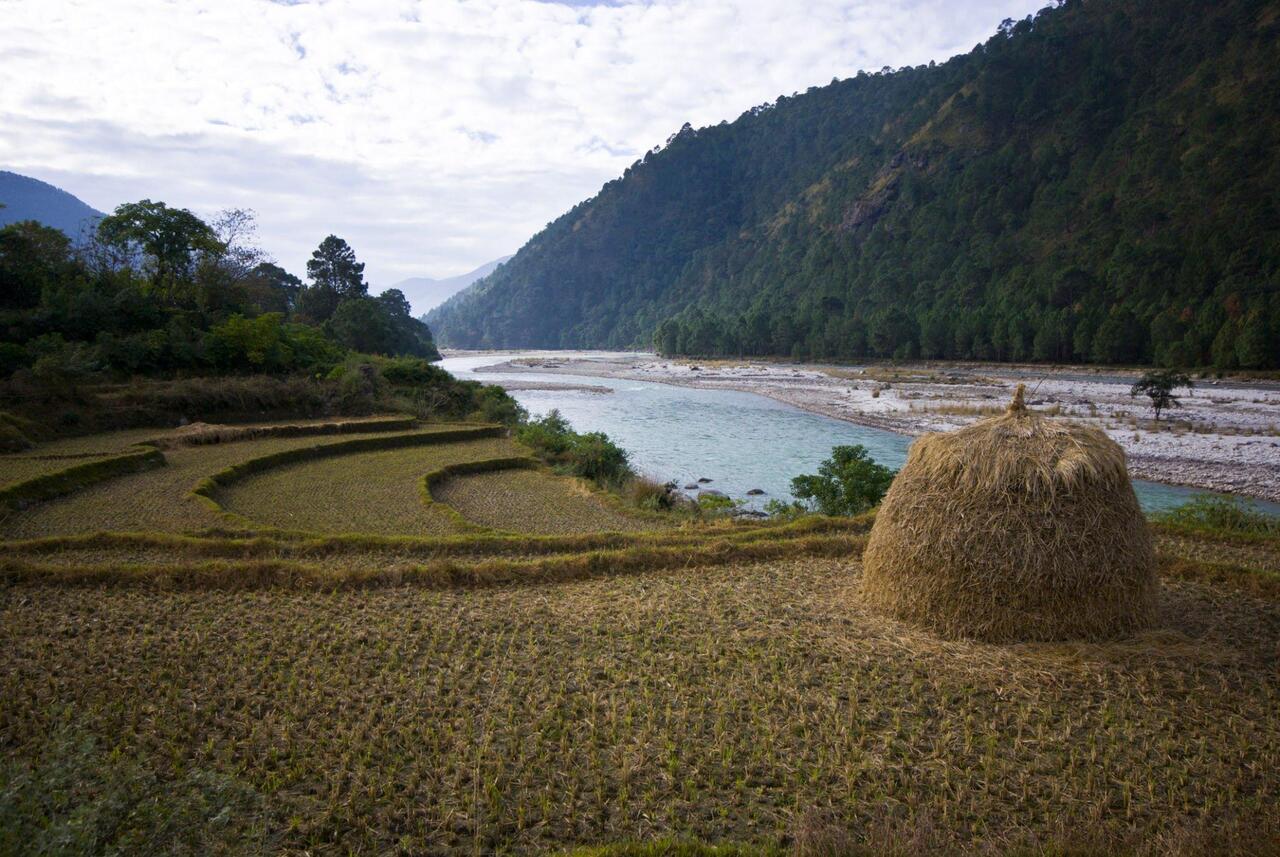
A dome of hay sitting in the terraced field of a farm in the fertile low-lying Punakhu Valley
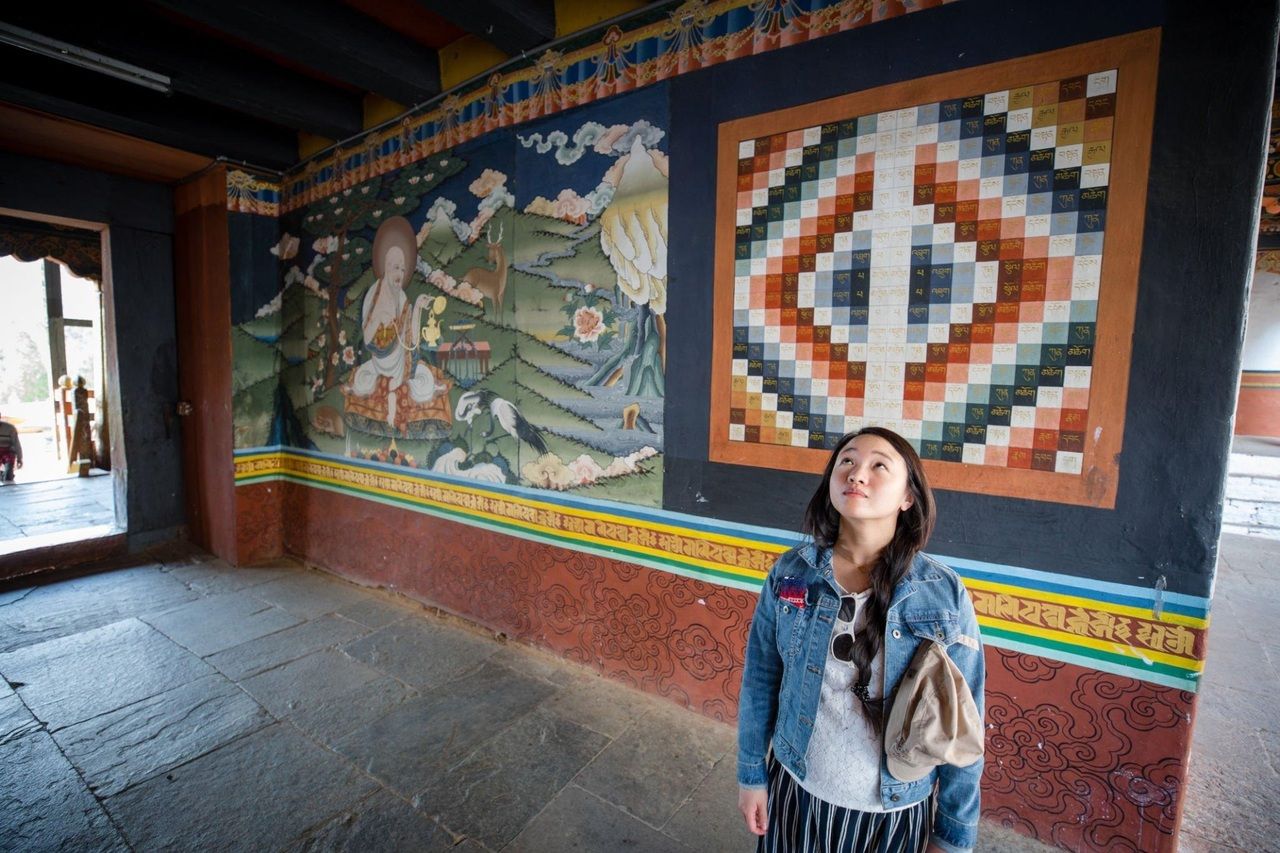
A young visitor admires the beautiful paintings on the walls and ceilings of the Punakhu Monastery. Dating back to the 17th century, it still serves as the winter residence of the Central Monastic Body who moves here every six months. It was also the seat of government up to the 1950’s and all the kings of Bhutan were crowned at this location
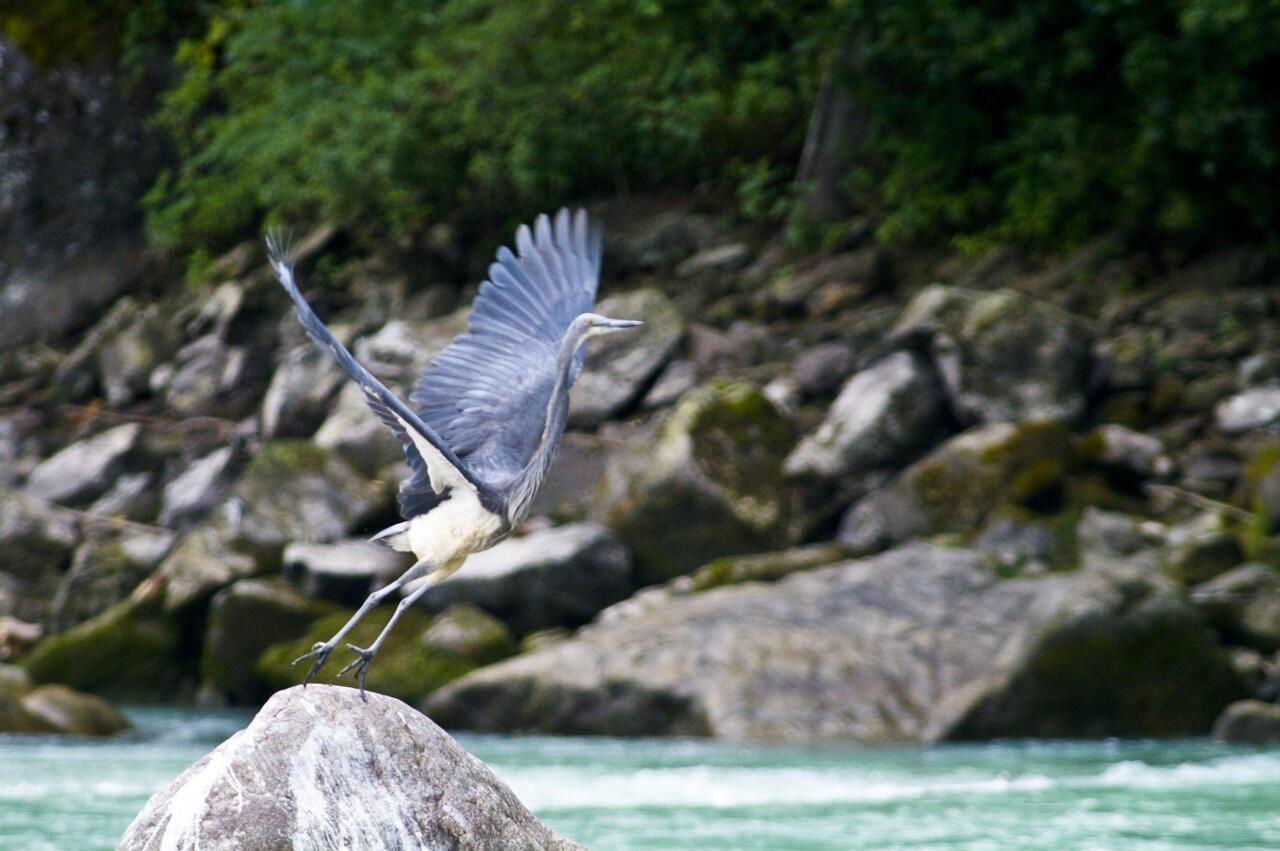
White bellied herons are critically endangered. Here one of these birds can be seen taking off from a rock in an alpine Punakhu Valley river. Bhutan is home to around 50% of the globe’s population of these large birds
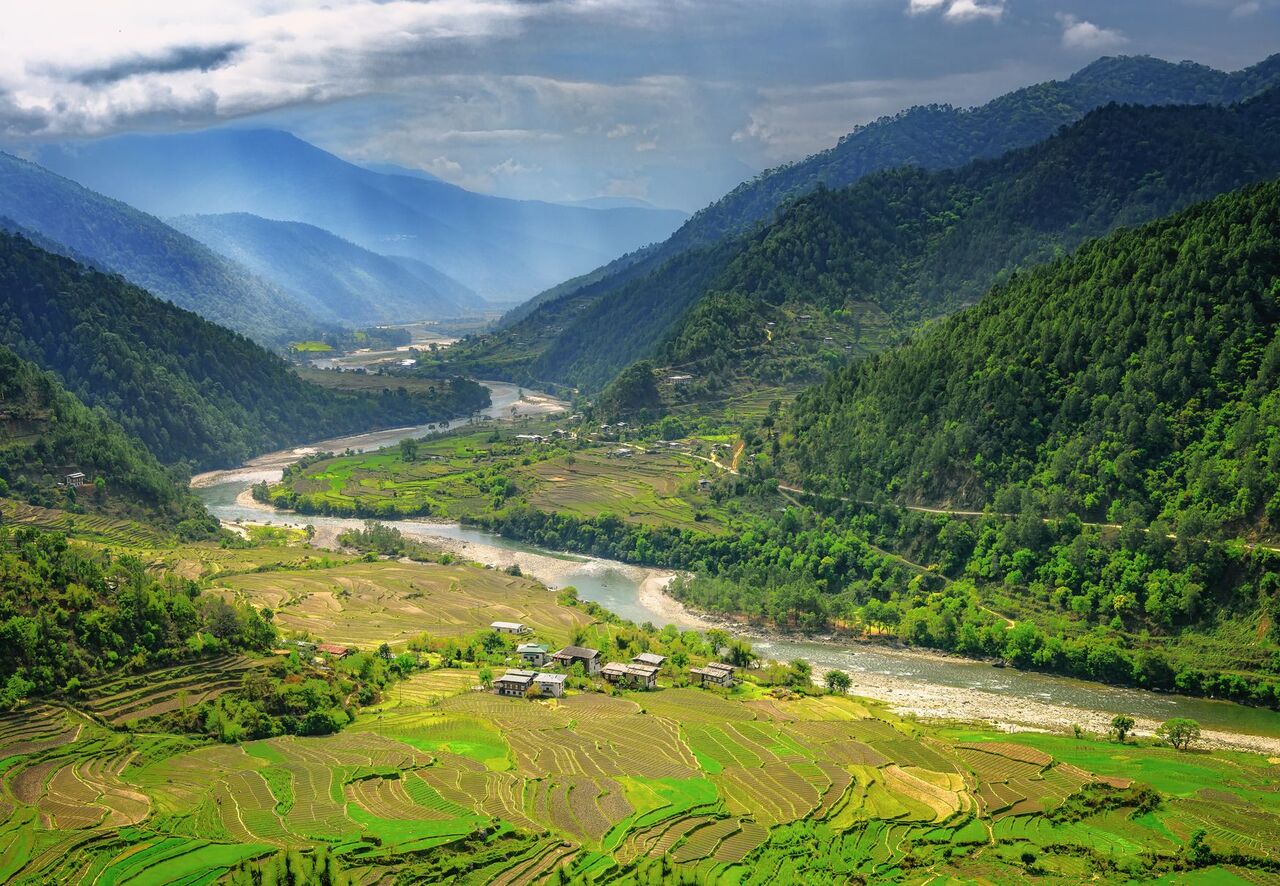
The beautiful scenery of the Punakha Valley is covered with rice paddies and densely forested hills, offering breathtaking mountain views. Bhutan is described as an earthly paradise, especially for nature lovers © Maurice Brand
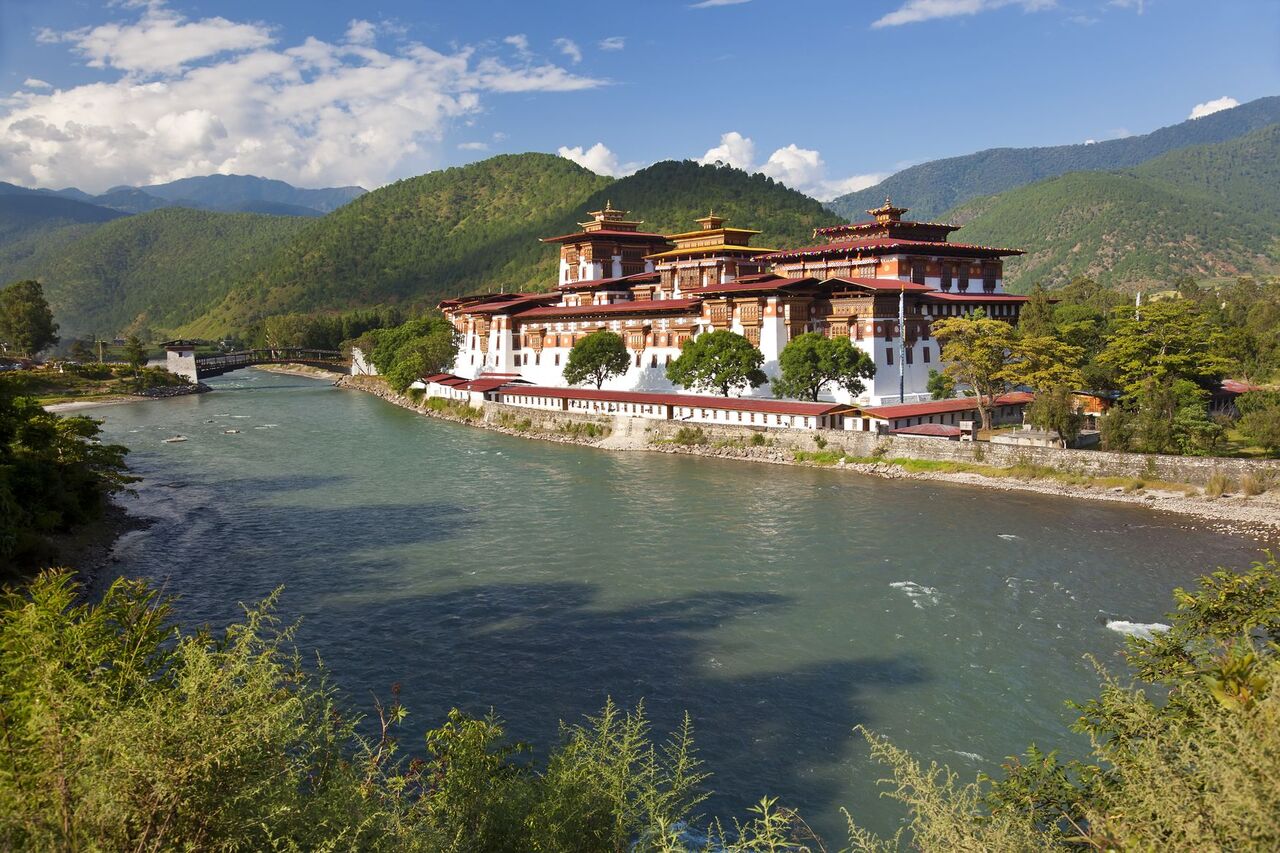
Punakha Monastery is situated between the Pho Chhu, the male and the Mo Chhu, the female river in the Punakha Valley. It has six floors, a central utse and three courtyards, making it the second largest in the kingdom © Peter Adams
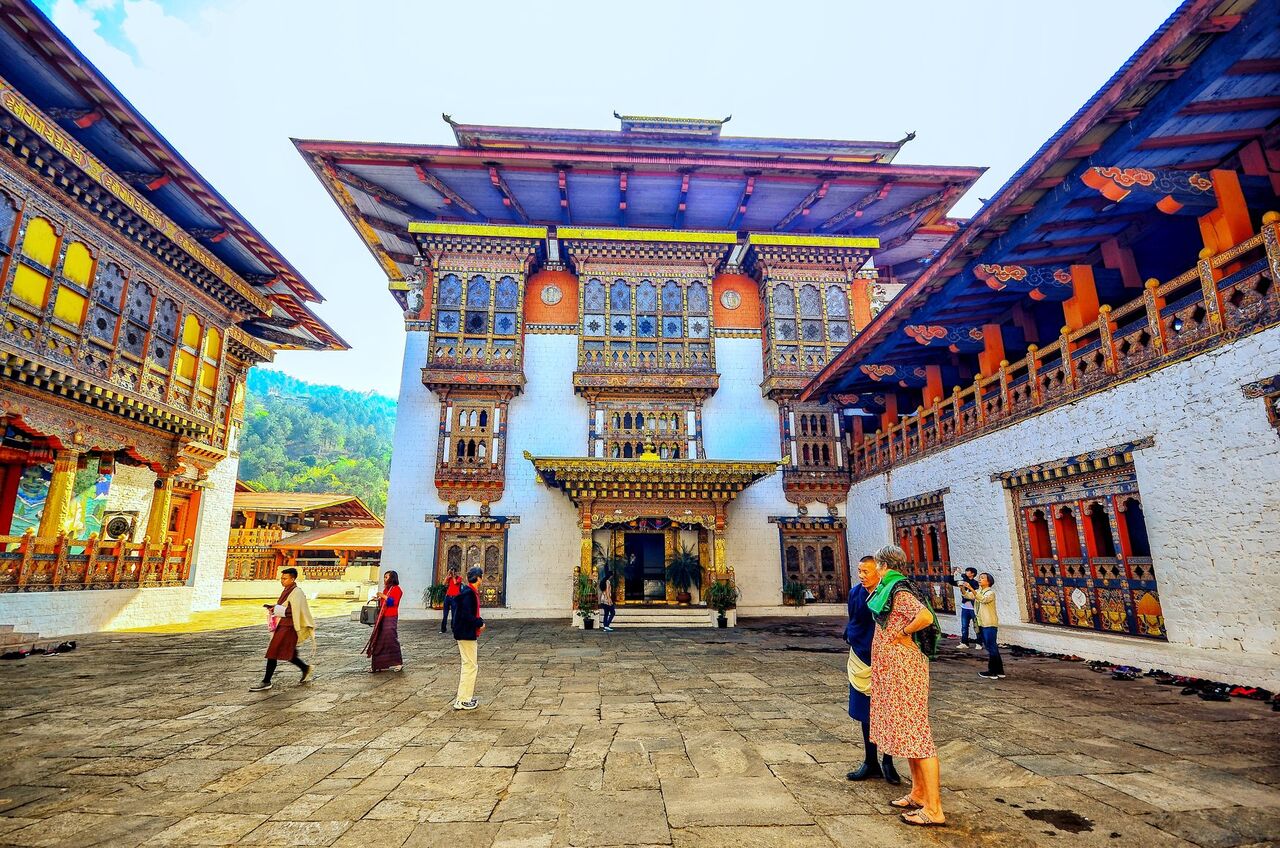
Foreign visitors in the beautiful courtyard of Punakhu Dzong, Bhutan. This monastic fortress is considered the most majestic in the kingdom. The six-story structure stands between the Mo Chhu and Po Chhu © rabbito rivers
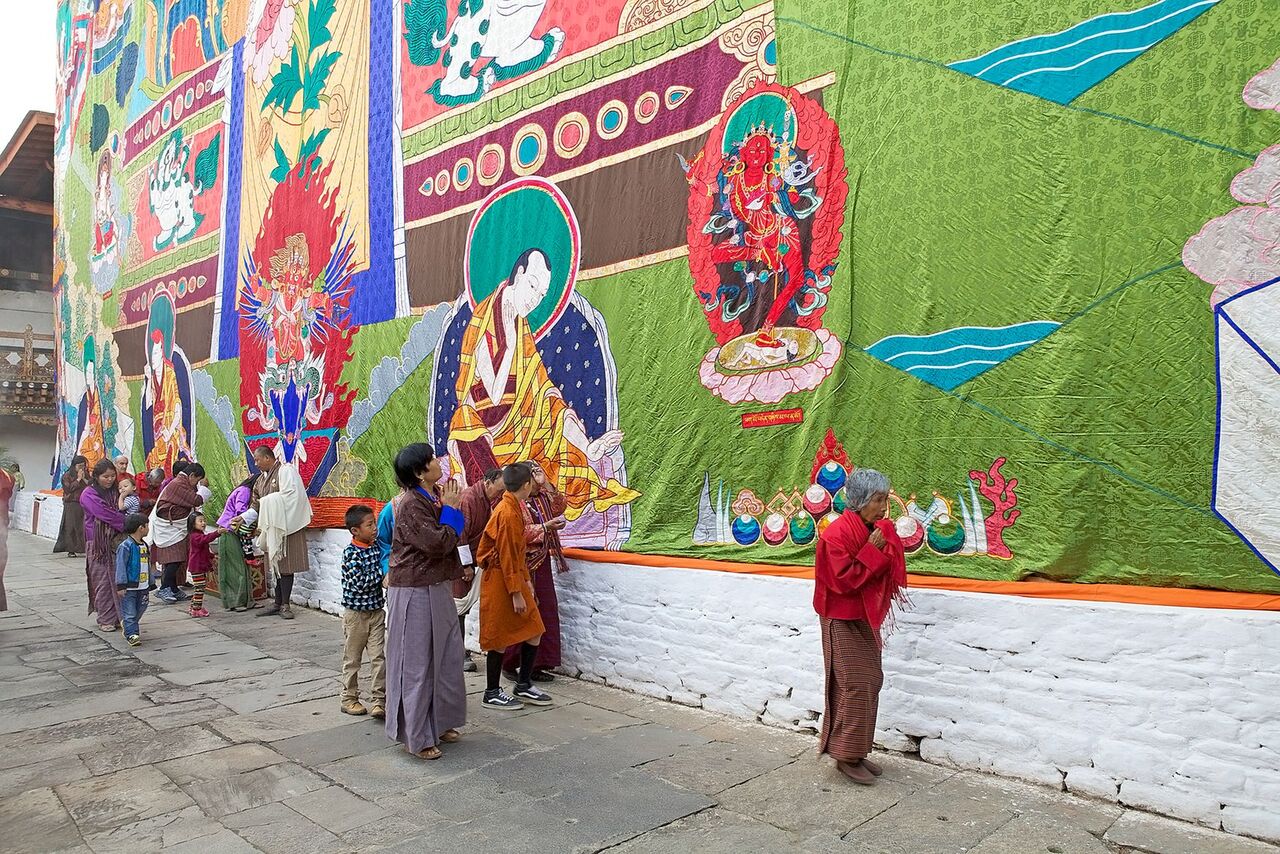
The large Rinpung Dzong is perched on a rocky outcrop overlooking the Paro River. Its interior is surmounted by a massive 5-storey tower (Utse). The Paro Dzong, as it is also known, and the smaller Ta Dzong are beautifully illuminated at night © mihirjoshi
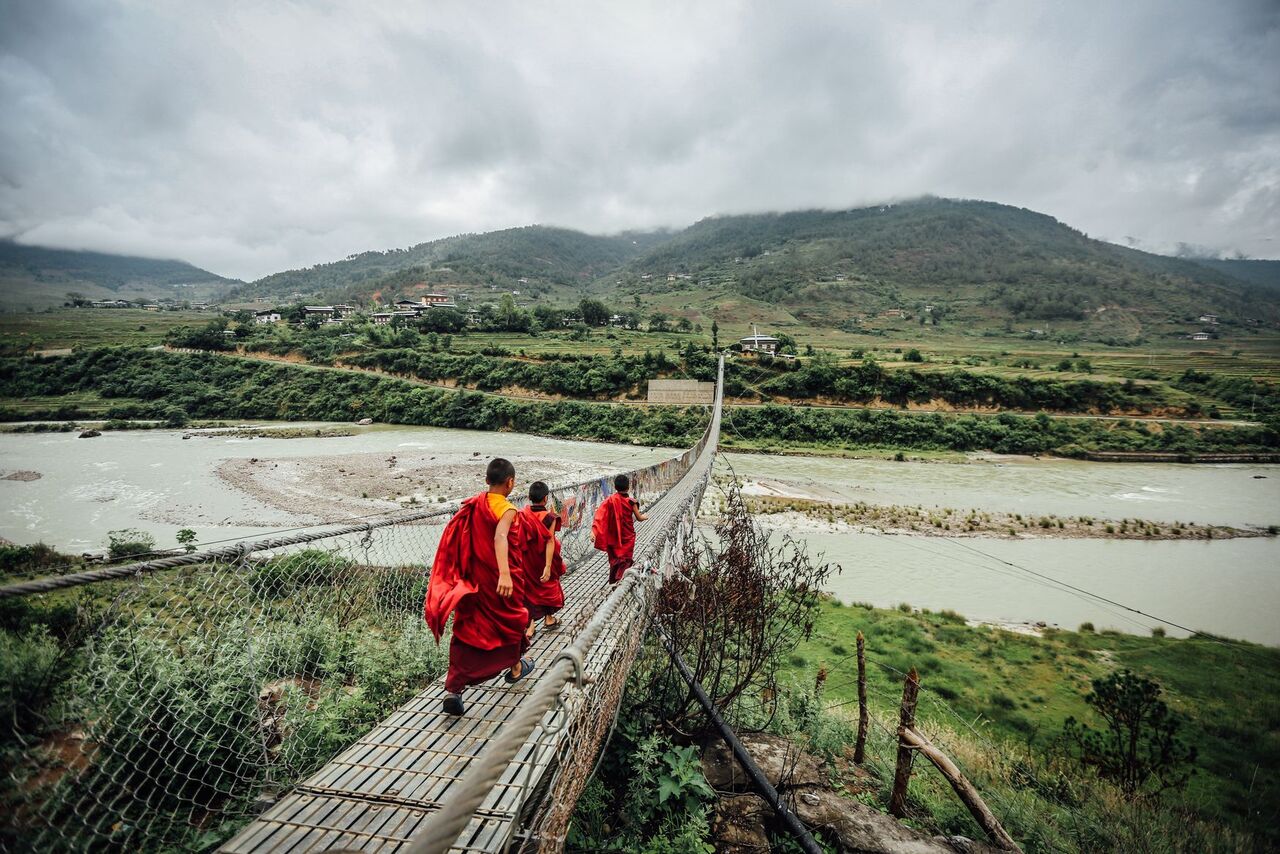
Monks cross a long suspension bridge over a river in the Kingdom of Bhutan © Dylan Haskin
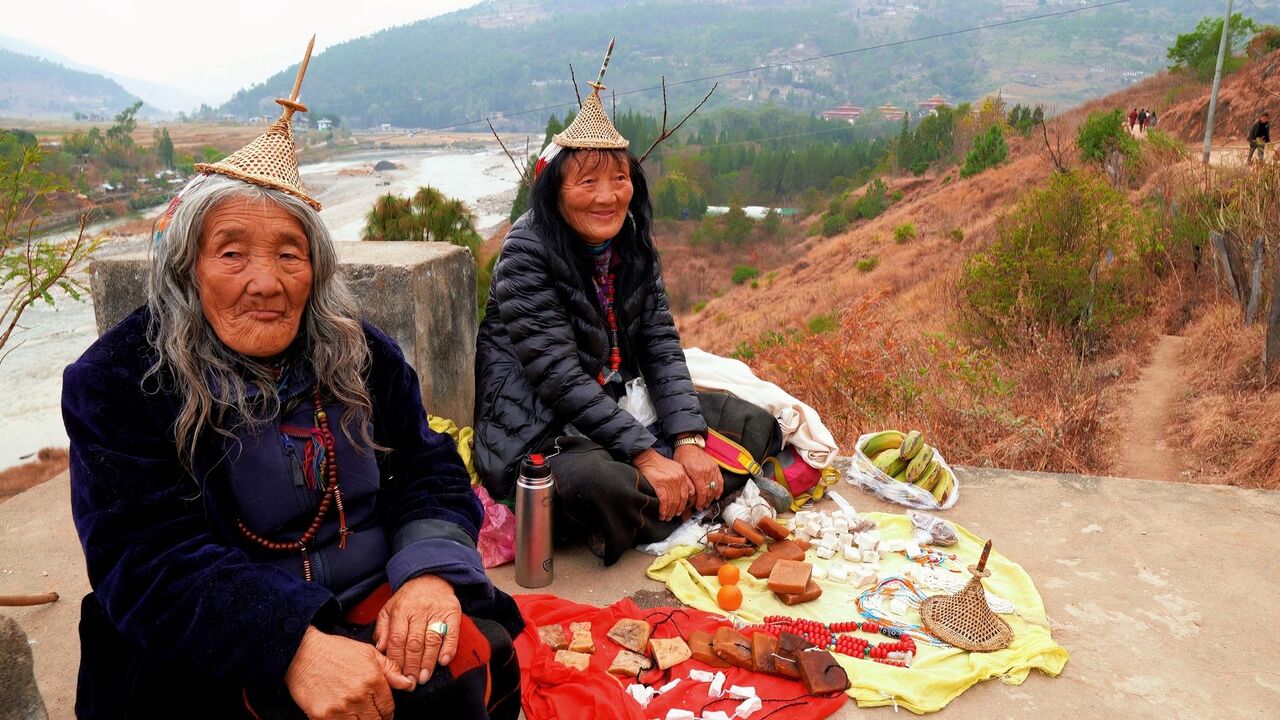
Two elderly local women sell groceries at the Punakha Suspension Bridge, which spans the Po Chhu River. It is the second longest bridge in Bhutan and connects the old city center of Punakha to the rest of the valley. This iron chain bridge is a popular tourist attraction © Alp Galip


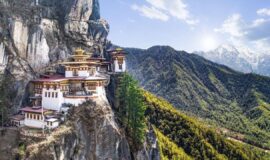
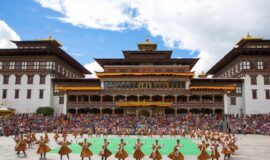
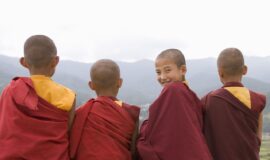
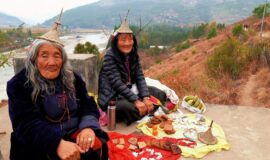
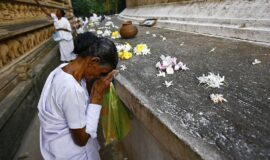
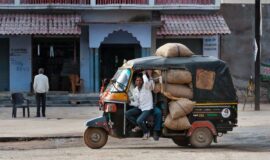
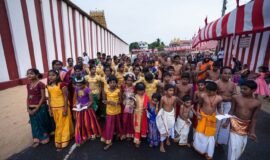
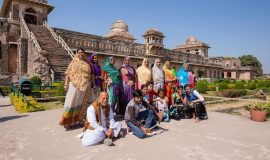
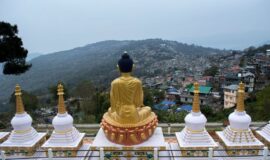
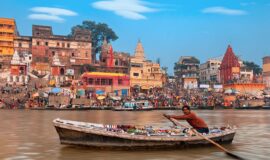
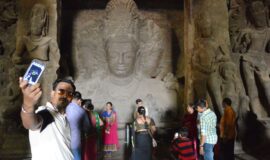
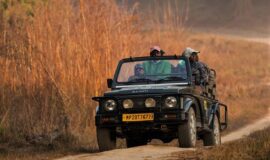
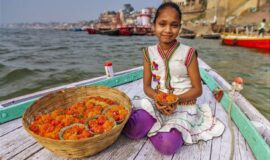
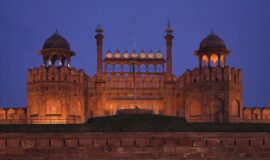
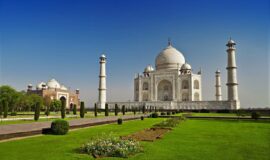
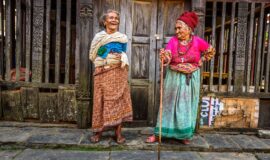
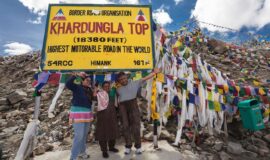
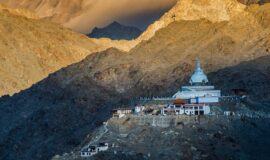
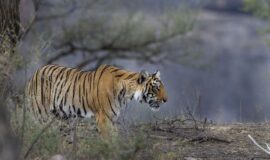
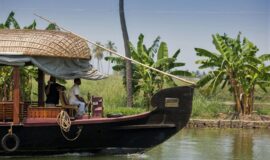
![Golden Triangle Tour with Goa [Culture + Beach Vacation] (12 days) Golden Triangle Tour with Goa [Culture + Beach Vacation] (12 days)](https://www.vacationindia.com/wp-content/uploads/2022/06/golden-triangle-tour-with-beach-vacation-270x160.jpg)
